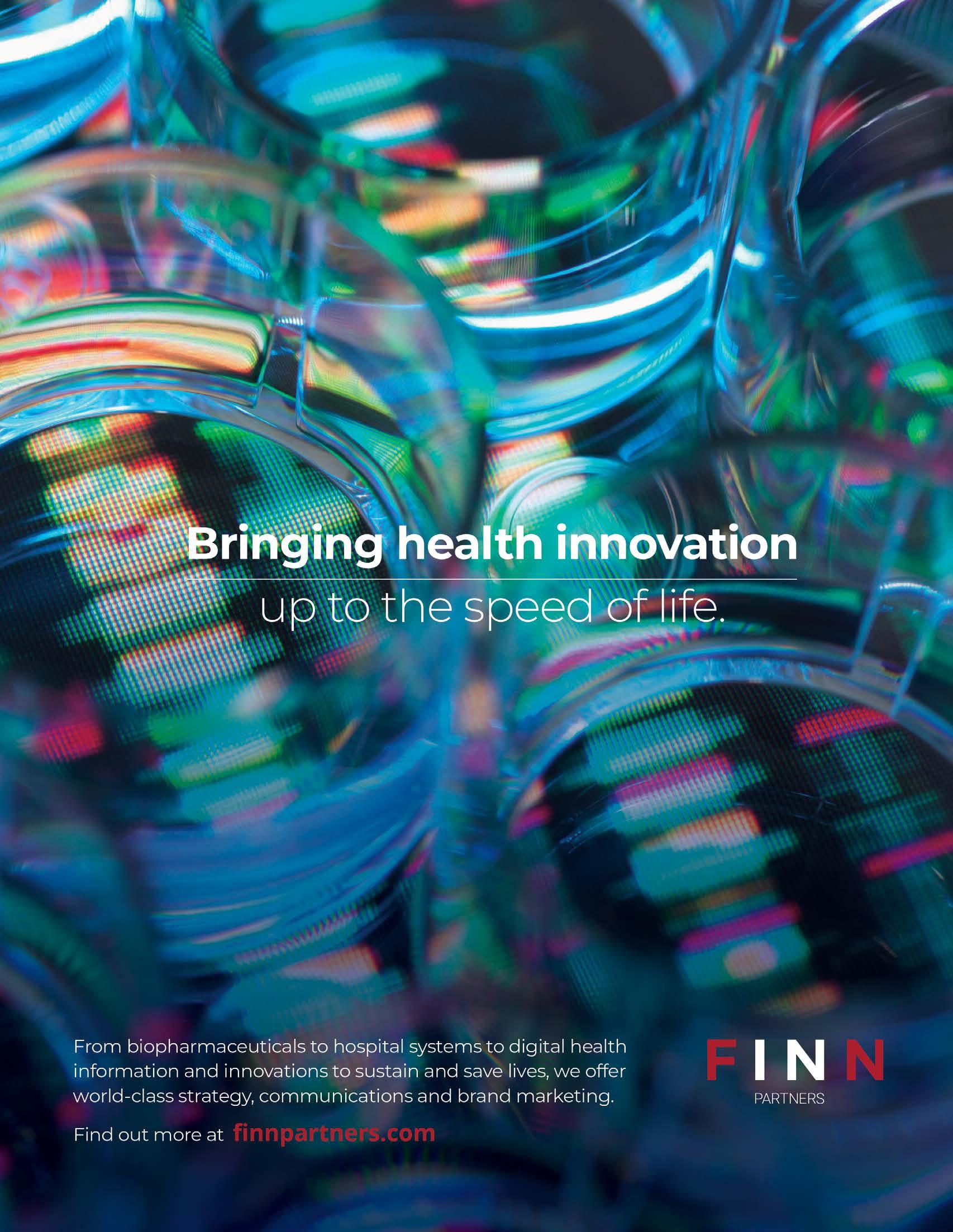
















The ongoing challenge of combatting misinformation online and the recent rise of generative artificial intelligence and deepfakes have become mainstream concerns in 2024.
As a result, according to a recent study released by software giant Adobe, Americans are growing increasingly skeptical of the content they encounter on the web and are reporting an increase in election-related misinformation in the months leading up to the U.S. presidential election in November, highlighting the need for government leaders and social media platforms to develop tools and solutions that address this growing problem.
Adobe’s study, which surveyed more than 2,000 U.S. adults about their experiences encountering misinformation, found that Americans are worried about the proliferation of misinformation and AI-generated content online and how it might impact the 2024 presidential election.
An overwhelming number of respondents (94 percent) believe the current spread of misinformation will impact the upcoming election. An additional 85 percent think election-related misinformation has increased in the past three months and 87 percent believe generative AI has made it more challenging to discern fact from fiction online.
Nearly half (44 percent) reported being personally misled by election-related misinformation within the past three months. And three-quarters (74 percent) of respondents said they’ve doubted the authenticity of photos or videos they’ve seen, which includes content circulated by reputable news. Nearly half (43 percent) also said they’re now less likely to trust the election-related content they see online.
As a result, many are logging off social media platforms altogether: Nearly half (48 percent) of Americans surveyed said they’re now cutting back or have outright stopped their use of certain social media platforms due to the amount of misinformation they encounter.
Americans want labeling for AI content
Due to Americans’ ongoing skepticism toward the content they consume online, the Adobe study found that many are now calling on U.S. government officials and social media platforms to address the threat posed by misinformation. According to the report, 89 percent think social media platforms should enforce stricter measures to prevent misinformation on their platforms, and 74 percent believe the government should take stronger action to protect people from misinformation. Disclosure tools appear to be one preferred solution: 95 percent of respondents said they believe attribution details should be attached to election-related content to help users fact-check information themselves and 90 percent want attribution details attached to online content related to a major news events or global crisis.
Transparency and labeling of AI-generated content are additional solutions that many Americans support. A recent poll conducted by Global Strategy Group found that Americans have grown increasingly concerned about AI-generated content and the potential impact this technology can have on individuals’ privacy—as well as artists’ creative works—and believe lawmakers should implement legislation protecting people and artists from unauthorized AI recreations of their voices and visual likenesses.
Those findings, which were released by the Human Artistry Campaign, a global coalition dedicated to the advancement of responsible AI, found that 84 percent of registered U.S. voters consider deepfakes and voice clones to be a problem. And these concerns cross partisan lines, as 85 percent of Democrats and 82 percent of Republicans agreed with the statement.
Once again, despite political affiliation, respondents widely agree that transparency and labeling are potential solutions to dealing with generative AI technology, with 89 percent supporting a basic requirement that developers and platforms label all AI-generated content. An additional 89 percent said they would support new legislation that protects people from unauthorized AI-developed deepfakes and voice clones, and 87 percent said they would support similar policies to protect artists’ voices and images.
An additional 85 percent of respondents also believe AI developers should maintain a public database of all content they use to train their models.
It appears that Washington is beginning to listen. In late July, Senators Chris Coons (D-Del.), Marsha Blackburn (R-Tenn.), Amy Klobuchar (D-Minn.) and Thom Tillis (R-NC) introduced the “NO FAKES Act.” That proposed legislation would protect individuals from unauthorized computer-generated recreations of their voice and visual likeness by AI and other technologies. A companion bill was introduced in the House in September by Reps. Adam Schiff (D-Calif.) María Elvira Salazar (R-Fla.), Madeleine Dean (D-Penn.), Nathaniel Moran (R-TX), Rob Wittman (R-Va.), and Joe Morelle (D-NY).
Here’s hoping for a fair and balanced 2028!


EDITOR-IN-CHIEF
Kevin McCauley kevin@odwyerpr.com
PUBLISHER John O’Dwyer john@odwyerpr.com
SENIOR EDITOR
Jon Gingerich jon@odwyerpr.com
ASSOCIATE EDITOR
Steve Barnes steve@odwyerpr.com
CONTRIBUTING EDITORS
Fraser Seitel
EDITORIAL ASSISTANTS & RESEARCH
Jane Landers
Melissa Webell
Advertising Sales: John O’Dwyer john@odwyerpr.com
O’Dwyer’s is published seven times a year for $60.00 ($7.00 a single issue) by the J.R. O’Dwyer Co., Inc. 271 Madison Ave., #1500 New York, NY 10016. (212) 679-2471 Fax: (212) 683-2750.
© Copyright 2024 J.R. O’Dwyer Co., Inc.
OTHER PUBLICATIONS:
www.odwyerpr.com
Breaking news, commentary, useful databases and more.
O’Dwyer’s Newsletter
A six-page weekly with general PR news, media appointments and placement opportunities.
O’Dwyer’s Directory of PR Firms
Listings of more than 1,250 PR firms throughout the U.S. and abroad.
O’Dwyer’s PR Buyer’s Guide
Products and services for the PR industry in 50 categories.
jobs.odwyerpr.com
O’Dwyer’s online job center has help wanted ads and hosts resume postings.
— Jon Gingerich


Communications teams are taking on more marketing functions than ever. They’re also increasingly skipping the CMO altogether and reporting directly to the CEO.
By Jon Gingerich
Is communications overtaking marketing?
According to a survey published by PR analytics and insights platform Memo, an increasing number of communications teams, stationed both in-house and at agencies, are seeing their responsibilities extend far beyond handling external communications duties. And the reporting structure has changed as well, with many teams now reporting directly to the CEO as opposed to the chief marketing officer.
Memo’s annual report, which surveyed 1,000 communications professionals working either in-house or at an agency, found that the job responsibilities of communications teams have evolved significantly in the last few years. More than half of communications teams said that internal communications (59 percent), marketing campaigns (56 percent) and executive communications (54 percent) now count among their responsibilities.
But that appears to be just the tip of the iceberg. Nearly 50 percent of communications teams additionally said the scope of their work is also increasingly beginning to
encompass proactive media (49 percent), social and corporate responsibility (46 percent), social media (45 percent) and reactive media (42 percent).
According to the survey, these responsibilities have especially grown among communications teams counting a staff of more than 50.
Not only are PR teams doing more, there’s also been a notable change in who they’re reporting to. While it used to be standard for communications teams to report to marketing leaders, that tradition has witnessed a major shift. The survey discovered that while 63 percent of communications teams reported to a CMO in 2023, that number dropped to only 37 percent in 2024. Instead, most communications teams are now reporting directly to the CEO (56 percent in 2024, compared to only 22 percent last year—a difference of 34 percent).
Only five percent of communications teams said they report to sales and one percent said they report to legal.
When it comes to communications teams’ top priorities, Memo’s report found
Employers beat all other sectors for trust among employees by a wide margin, according to an Edelman report.
By Steve Barnes
Who do employees trust the most?
According to a newly released Edelman study, the answer to that question—as it has been for the past few years—is “My Employer.”
The “Edelman Trust Barometer Special Report: Trust at Work” reports that employers continue to top other sectors in trust levels by a rather comfortable margin. Almost eight in 10 respondents (79 percent) indicated that they trusted their employers, holding steady from the number seen in last year’s survey.
Business came in second at 66 percent, up one percent from 2023. NGOs matched last year’s survey at 57 percent, with government (55 percent, up 2 percent) and media (52 percent, up three percent) seeing some positive movement.
But in the opinion of respondents, trust turns out to be a two-way street. A perceived lack of trust from management leads

employees to return the favor. Only 25 percent of respondents who said they feel management does not trust them said that they trust their organization’s CEO. Heads of HR (31 percent) and managers (42 percent) fared somewhat better on that particular trust meter.
Edelman’s report also found that trust in institutions is often dependent on whether or not a respondent is optimistic about their economic outlook. Those who said they expect to be better off in five years than they are now expressed a rather high level of trust (73 percent) in the four main institutions Edelman lists. Out of those who expect their fortunes to take a downturn over the next five years, only 27 percent said they trusted those institutions. Perhaps not surprisingly, executives had a sunnier view of their economic future than did associates. More than three-quarters (78 percent) of the executives surveyed ex-
that amplifying key messages (43 percent), increasing share of voice against the competition (40 percent) and building awareness (38 percent) most frequently appear as communicators’ top three responsibilities. This was followed by increasing coverage (37 percent), combating misinformation (37 percent), fostering community engagement (36 percent), driving the sales pipeline (35 percent) and changing perceptions (34 percent).
Some differentiation does exist in the perceived priorities among in-house and agency communicators, but overall, their goals remain mostly aligned. 44 percent of agency PR pros cited increasing share of voice as the top priority, compared to only 40 percent of those working in-house. Amplifying key messages is a top priority among 43 percent of in-house pros, compared to 38 percent of agency staffers. Building awareness was billed as a top priority for 39 percent of agency pros, compared to 38 percent of in-house staff. This was followed by increasing coverage (38 percent agencies vs. 37 percent in-house), combating misinformation (37 percent agencies vs. 37 percent in-house), community engagement (37 agencies vs. 36 in-house), driving the sales pipeline (35 percent in-house vs. 34 percent agencies) and changing perceptions (34 in-house vs. 31 agencies).
pected to see their situation improve over the next five years—a jump of three percent from 2019. For associates, that number plunges to 39 percent, a 10 percent drop from 2019.
Optimism levels showed a strong connection with how engaged respondents are at work. In addition to being 20 percentage points more likely to exceed work expectations than their non-optimistic peers, optimistic respondents were 21 percentage points more likely to advocate for their employers and 16 points more likely to stay with their organization for many years. According to the survey, there are several ways that employers can close the “economic optimism gap.” Such initiatives as encouraging employees to develop their careers, giving them opportunities to have an impact on society through their work and giving them a say-so in the implementation of such technologies as AI, resulted in a 21 percent optimism bump among respondents.
Edelman’s report surveyed close to 8,000 people in eight countries.
Why a rigorous commitment to listening is essential for healthcare marketers navigating a rapidly changing market in the face of an election cycle.
Healthcare marketers are stepping up their integrated game. We’re seeing it across our client base and industry sectors. A decade ago, you may have seen a singular marketing function managing content, social media, creative and even PR. But today, marketing stacks are flush with skillsets spanning operations, product, brand and even specialist functions. And it’s not only health tech vendors. It’s providers too.
So, as marketing teams expand—and as they touch more areas of the care spectrum—they’re increasingly tasked by the C-Suite to blend brand-building, product awareness, customer success and demand-generation efforts to optimize campaign success and show real ROI.
Brand-to-Demand: powered by listening
We’ve seen the integration of brand-todemand strategies offering a more comprehensive approach that addresses the complex and lengthy B2B buying cycles often found in healthcare. These buying cycles are also influenced by market forces beyond marketers’ control—such as regulatory guidelines, changing compliance standards and yes, elections.
So, how can brands effectively apply the B2D approach in the face of an election cycle that, by many standards, is anything but typical?
Listen: to your customers, to your employees, to your markets. As you work to stay on pace with your goals, maximize campaign planning and execution by staying on the pulse of what’s driving change in your industry. How to do that, you ask?
Audit the headlines
Generally speaking, policies and legislation around Medicare, the Inflation Reduction Act, the Affordable Care Act and the overturning of the Chevron Doctrine and Roe v. Wade heavily influence media coverage. Let’s look at three of the top trends driving healthcare media headlines, taken from PAN’s latest research—HealthPulse: Election Edition.
Women’s health: This is the leading topic around the election, with the focus around the reversal of Roe v. Wade. Conversations around abortion access, state bans/legislation and reproductive rights—and IVF— took center stage in both Presidential debates.
Mental health: This is the second-largest topic around the election from a healthcare perspective. There’s an emphasis on suicide and, more recently, the Mental Health Pari-
By Matthew Briggs
ty and Addiction Equity Act.
Health equity: Rounding out the top three conversations driving healthcare headlines is health equity. In this case, equity primarily applies to the issues of Medicaid populations and paying for care.
Understand the landscape
Monitor political trends: Keep an eye on political developments and public sentiment. This can help you anticipate shifts in public opinion and adjust your messaging accordingly.
Segment your audience: Political climates can influence different demographic groups in various ways. Tailor your messages to resonate with your specific audience segments, considering their political leanings and concerns.
Assess the impact of taking a stance
Avoid polarization: Some say “stay apolitical.” Others will advocate for taking a stance. But you will always do right by focusing on your brand’s core values and messages.
Maintain neutrality: If your brand takes a stance on political issues, understand that there could be consequences. Ensure the position aligns with your core values and mission. Be prepared for mixed reactions and handle them with transparency and respect.
Be agile
Prepare for disruptions: Election years can lead to sudden shifts in public focus and media attention. Have contingency plans in place to quickly adapt your campaigns or pause them altogether.
Monitor and respond: Use real-time analytics to track how current events are affecting your campaigns. Be ready to pivot if you notice that your audience’s interests or concerns are changing.
Leverage data wisely
Analyze historical data: Review past election years to understand how they impacted consumer behavior, business, the economy and your campaign effectiveness. Use these insights to inform your current strategies. Implement robust measurement: Like any non-election year, establish clear metrics and KPIs to evaluate your campaign’s success. Consider both quantitative measures (e.g., engagement or conversion rates) and qualitative feedback (e.g., customer sentiment).
Focus on value and education
Deliver value: Emphasize how your product or service adds value to your audience’s
lives, beyond this current political moment. Providing useful content or solutions will drive brand relevance and credibility.
Educate and inform: Use your brand and executive platforms to provide content that helps your audience understand important issues or trends related to your industry.
Be consistent
Reinforce brand identity: Ensure your messaging remains consistent with your brand voice and values. This consistency helps maintain trust and familiarity amid the noise of election year distractions.

Balance campaigns: Balance concurrent campaigns to reduce the risk of being overshadowed by election-related news. Keep a consistent presence without overloading your audience.
Prepare for
scrutiny
Anticipate increased attention: Political years can increase public scrutiny of public statements and actions. Be prepared for heightened attention and be sure to thoroughly vet all communications.
Manage crisis situations: Develop a crisis communication plan to address any potential issues swiftly and effectively. This includes having a designated “all-hands” team ready to handle any negative fallout.
Monitoring, auditing and setting up strategic listening is essential to staying relevant in these types of news cycles. Regularly review performance indicators, such as media impressions, website traffic and lead generation. Compare these against your established goals to identify what’s effective and where adjustments are needed. Gather feedback from various channels, including social media and media coverage, to refine your campaigns.
Listen. Audit. Act.
Flexibility is key to maintaining relevance and effectiveness in a rapidly changing market created by an election. By keeping these strategies in mind, marketers and communications professionals can better navigate the complexities of running campaigns during an election year.
Rigorous commitment to listening, monitoring, evaluating and adapting your strategies is essential to navigate the weeks and months ahead. Doing so will keep your brand in front of the conversations relevant to your key audiences.
Matthew Briggs is Senior Vice President of Healthcare at PAN.


Marketing pros can support organizations in the senior care sector by developing nurse recruitment strategies that attract and retain top talent in an industry facing massive staffing shortages.
According to the World Health Organization, the aging population is expected to double by 2050. In response to this projected growth, players in the senior care industry are looking to expand their workforce. But despite these efforts, staffing attrition in senior care facilities remains high, with widespread burnout on the rise and 900,000 nurses expected to leave the profession by 2027.
Initially—and especially during the pandemic—many facilities turned to travel nursing to fill staffing gaps. While travel nursing remains critical to the sector, senior care facilities have sought to reduce labor costs and maintain a more permanent employee base. Now, facilities are primarily focused on hiring their own and providing continuity of care that aligns with a patient-centric approach.
Understanding what nurses value
To keep nurses in the field, senior care providers first need to understand nurses’ unique values and motivations.
The Bliss Group conducted audience research to gain insight into the core factors that incentivize nurses to apply to certain healthcare companies. This research included collecting and analyzing data from Twitter, Facebook, Reddit and review sites such as Indeed between December 2021 and January 2023.
Based on the analysis, we found that purpose-driven work, peer-to-peer relationships, a positive and supportive culture and compensation and benefits were the top factors that drive nurses to pursue a career at a given company.
By conveying these values through an integrated marketing approach, senior care facilities can attract and retain top nursing talent. Storytelling is the way forward. Purpose-driven work
Nurses are primarily drawn to their work for one simple reason: to make a difference in people’s lives. Beyond the call to care, nurses want to build long-term relationships with their patients and residents. These relationships give nurses a sense of purpose, adding meaning to the long shifts, painstaking decisions and sometimes hazardous conditions in which they work.
Emergency rooms and outpatient care settings naturally experience more patient turnover, preventing nurses from building bonds with their patients. Senior care facilities are comparably stable healthcare set-

tings, housing the same patients and residents for a more extended period of time.
To attract and retain nurses, facilities should spotlight the nurse-resident bonds across multiple channels, including their website and social media platforms. These stories should illustrate the longstanding relationships nurses have cultivated with their facility’s residents, as well as capture the ways in which these nurses find personal fulfillment at work. Taking this storytelling a step further, facilities can demonstrate the impact their nurses have had on their patients and residents and the broader organization.
Content with images, compelling quotes and personalized details tends to garner more engagement.
Peer-to-peer relationships
Our audience research shows that when nurses are happy about where they work, they share their experiences with other nurses. Good co-worker relationships are also the number one reason why nurses stay with their employer, according to Nurse Recruitment Experts’ Nurse Retention Survey. Nurses lean on colleagues for solace and support, as these bonds help them reduce stress, improve productivity and feel overall happier at work.
Nurses also rely on other nurses to inform their decision-making about where they want to work, and many turn to online forums via Facebook and Reddit to share their work-life experiences.
This information-sharing necessitates organizations to foster a company culture that encourages camaraderie. One way facilities can convey this value is by leveraging nurse ambassadors to champion the organization’s cause. Ambassadors should share their positive experiences working at the facility and their relationships with fellow nurses on their personal social channels. Senior care facilities should amplify these stories through blog content and social channels, highlighting employee milestones, accomplishments and close working relationships.
Positive and supportive culture
Long hours and staffing shortages continue to contribute to higher stress in the nursing profession, with 32 percent reporting that they felt burnt out in 2023. More than ever, facilities must demonstrate that they provide a stable and supportive work culture.
By Alexis Odesser
Senior care facilities, which offer more steady and predictable hours than hospitals and outpatient care settings, should leverage marketing communications to highlight their nurses’ relatively steady day-to-days at the facility. One way of conveying this stability is to solicit reviews from happy employees with a proactive online review campaign, directing nurses to employee review sites such as Indeed and Glassdoor.

Facilities should also lean into social media to showcase their supportive company culture. Posting company events, nurse promotions, mental health and wellness initiatives and employee appreciation spotlights can impress upon nurses that the organization values its nurses and their overall well-being.
Compensation and benefits
Combined with feelings of burnout, nurses feel overworked and underpaid, and like all members of the workforce, they seek jobs with competitive compensation and benefits. Given their notoriously long shifts, nurses are particularly drawn to benefits that allow for flexibility, as well as opportunities to upskill, further their education and receive other perks.
Senior care facilities, which offer considerably lower-stress environments than emergency services settings, should highlight their schedules as well as nurse-resident ratios on career platforms including Indeed, Glassdoor and LinkedIn.
Organizations should also leverage these platforms, as well as social media channels, online forums and owned career pages to highlight their workplace benefits. Including specific details about compensation packages, opportunities for upskilling and promotion, flexible work arrangements and other benefits are more enticing and likely to attract top talent.
Telling stories about upward mobility— for instance, a certified nursing assistant working their way up to director of nursing—are not only inspirational, but they also demonstrate a workplace’s growth potential.
Continued on page 19


Why prioritizing earned media coverage can help healthcare PR pros educate consumers in a world where people are moving away from traditional Internet searches in favor of AI-driven platforms.
The way consumers manage their health is undergoing a seismic shift. Not long ago, consumers relied solely on healthcare professionals and Internet searches to better educate themselves about health conditions, symptoms, treatments and preventive well-care measures. Instead, more people are turning to artificial intelligence platforms like OpenAI’s ChatGPT or chatbots for instant, personalized health insights.
A 2023 Pew Research Center report found that the reliance on traditional Internet searches for health information is declining, with more users turning to AI-driven assistants and apps for quick, personalized insights. Another 2023 study from Accenture shows that 46 percent of healthcare consumers already use some form of AI— or digital assistant—to manage their health, and this is expected to grow significantly in the coming years.
The rapid transition from conventional Google searches to AI-driven platforms represents a fundamental change in how consumers want to consume health information. From experience, it doesn’t take long to see how drastically different the results are using the same information prompts. This dramatic evolution in consumer behavior presents opportunities and challenges, especially for healthcare communications experts who can play an essential role in the content consumers pull from AI-powered platforms.
A modern-day health assistant
AI is no longer a “futuristic concept” but an integral part of our daily lives, including how we manage our health. With AI-powered platforms like ChatGPT available across digital media, consumers have a tool that can provide immediate answers to their health-related questions. Whether a person is trying to understand a medical condition, symptoms or a new treatment option, AI offers a high level of accessibility and convenience that traditional search engines can’t match.
Google, for example, provides a wealth of information. Still, it requires users to wade through various pages, links and sources, interpret complex medical jargon and navigate potential misinformation. In contrast, AI tools tell you what it means and why you should care in simple, personalized, contextually relevant responses in real time. AI can also translate highly complex information into easily digestible language.

Consider, for example, other user-friendly AI applications. Consumers upload photographs of lab results, physician summaries and medical device monitors to AI platforms for analysis and explanation. Whether it’s a photo of an EKG readout or a screenshot of lab test numbers, it’s easy to see why AI platforms are quickly displacing traditional Internet searches to help people become more educated about their health.
Balancing the benefits and risks
As a user, there’s a lot to like about AI research tools for health as they provide fast access to sourced information, summarize the information for you and provide convenience to use from home or on the road. However, the benefits come with significant risks. The accuracy of AI’s interpretations is only as good as the data it has been trained on, and there’s a real danger of consumers misinterpreting or over-relying on AI-generated information without consulting an expert (which AI fortunately includes). Further, the privacy of sensitive health data remains a critical concern, especially on free platforms. As more and more consumers share images of their personal information, data or device readings with AI platforms, ensuring that this data is securely handled and not misused is paramount. These challenges underscore the inherent risks in using rapidly effective and evolving technologies in their early stages. So, where does AI draw its content from, and what can we do to ensure consumers get the information we want them to have?
Shaping AI content through earned and owned coverage
While AI is not yet a flawless tool for healthcare, it’s not going away. As consumer adoption of these AI tools increases, healthcare PR professionals will influence the information disseminated. This starts with understanding how AI trains its respective platforms and prioritizes information. To that end, earned and owned media coverage has never been more important in the era of AI.
Earned media, such as news articles, reviews and social media mentions, often carries greater credibility and authority, leading AI systems to prioritize it due to its organic reach and user engagement. Owned media, like company websites and blogs, provides factual, first-party information, which AI pulls for specific data requests. Therefore, as consumers increasingly experiment and engage with AI tools to gather health infor-
By Kelly Dencker
mation, earned and owned media strategies must be part of every integrated marketing program.
Breaking through, however, requires equal parts commitment, creativity and content from companies and brands alike. Due to a highly competitive media landscape, the bar for earned media coverage has never been higher. Yet, by prioritizing earned media, healthcare communications professionals can help their companies and clients stay at the forefront of consumer health education in the AI era.
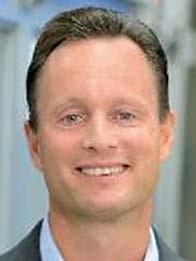
Kelly Dencker
The creative key to earned coverage
Securing earned media coverage in today’s competitive environment is more challenging than ever. With countless companies, brands and competitors vying for attention, communicators must commit to pushing creative boundaries to drive engagement in education, information or entertainment. This is especially important for grabbing the attention of both journalists and the public, ensuring that your story not only stands out but also resonates with the audience you’re trying to reach. Further, doing so in a regulated healthcare industry where the words you use matter—makes it even more difficult.
While it may sound cliché, storytelling lives at the heart of innovative earned media strategies. Successful healthcare campaigns are often built around human-centric stories that reflect empathy, inspiration or personal transformation. For example, rather than presenting data on a health issue straightforwardly, brands can tell how a specific medical innovation improved a patient’s life, illustrating the emotional and tangible impact. These narratives appeal to the media’s need for compelling content their readers will engage with.
Furthermore, creative content that integrates multimedia elements—such as infographics, video and interactive tools—can elevate coverage. Journalists are more likely to cover stories when brands provide visual assets that simplify complex health topics. By offering these features, healthcare brands can better connect with consumers, simplifying their understanding of intricate
Continued on page 19


Healthcare organizations can empower patients and build trust in an informational ecosystem where consumers are constantly forced to decipher fact from fiction. By
It’s no surprise that more than half of Americans use the Internet to search for healthcare information online—but did you know only 30 percent trust that information? According to a recent survey of 243 U.S. adults aged 18+ conducted in September by G&S Business Communications, that’s the trust gap healthcare companies are facing.
We work with clients in the healthcare business every day, but we’re all also healthcare consumers. We acutely understand the complexities of the healthcare industry that contribute to these challenges as both communicators and users, and we use our expertise and experience to help our clients build the reputational equity they need to maximize their impact.
The truth is that effective communication is one of the most powerful tools the healthcare industry can use to bridge the trust gap, especially in this age of rampant dis- and misinformation. Healthcare organizations, especially providers like health systems, require smart solutions that remove barriers to access, empower consumers with the right information and ultimately help them improve health outcomes equitably.
Building trust
Health is deeply personal to each of us, and our relationship with healthcare works best when it’s built on a foundation of trust. The Internet is now routinely a healthcare organization’s first venue for connection and information sharing. It’s also a space in which reputation and trust can be both built and torn down. Before a conversation with a health professional, most people today search online for information about a condition they or a loved one might have, whether their insurance covers a medication or procedure or how expensive it might be. But it can be hard to find the right answers or know which sources to trust. According to our survey, accuracy (79.84 percent) and trustworthiness (67.90 percent) are the most important factors when considering online healthcare information. Healthcare organizations should strive to become a primary and trusted source of information as well as the easiest to understand. They can do this by more intentionally using data available about their audiences to tailor content and develop smart media strategies. This is often discussed but rarely put into practice in a consistent and strategic manner.

Emily Hirsch and Marjani Williams
Digital analysis: Routinely review user search behavior to literally meet people where they are relative to channels, devices, geographies, demographics and more. Find out what terms people are looking for and how they’re phrasing questions instead of relying on technical medical jargon.
Owned: Use this information to improve the relevance of owned content and increase the use of keywords to rank more highly in search engine results—as well as to ensure content makes sense to those most likely to read and need it.
Earned: Position experts with media contacts to comment on these same issues, building credibility and adding a human touch. And train those experts to communicate clearly and authentically to foster audience connection.
Social: Build community, share engaging stories and relate in real time. Put people at the center of the healthcare story.
This strategic communications approach creates a simple but effective foundation for healthcare businesses to build upon, but no strategy is one-size-fits-all. Organizations must dig deeper with clients to help them align their core values and represent themselves authentically to build connections to their brand.
However, it’s hard to discuss communications in 2024 without acknowledging the rise of misinformation and how it broadly erodes trust. Bots, AI, clickbait and self-proclaimed experts have quickly changed the dynamic on social media and across the Web, making it harder than ever for people to decipher fact from fiction. It’s critical to think through the impact and virality of misinformation and how we prioritize combatting untruths reactively and proactively.
There are many other considerations beyond media that impact trust in healthcare. For example, communities of color and many rural populations have historically endured negative healthcare experiences and many of these challenges remain. Organizations must take a holistic and transparent approach to navigating nuances among vulnerable populations with openness, sensitivity and creativity.
Empowering healthcare consumers
Healthcare consumers want partnership, not paternalism. They want to be actively involved in the decisions that matter most to them. In addition to building credibili-
ty, we know that serving up thorough and clear information empowers consumers to be better advocates for their own health. Arming consumers with the right information upfront better prepares them to actively participate in their healthcare, which studies show leads to better clinical outcomes.


As consumers’ healthcare needs continue to evolve, the healthcare industry must plan carefully and move quickly to meet these moments of change and ensure communications remain fresh and easy to access and understand. According to individuals we surveyed, a significant majority (59 percent) believe it’s extremely important that healthcare information is easily accessible. Furthermore, clear calls to action (65 percent) and user-friendly websites (56 percent) are the most effective methods to drive them from information to action. Organizations should seek to make the customer experience as easy as possible and offer solutions to unmet needs. The healthcare industry has started to embrace the concept of “consumerizing” and enhancing the “ease of use”—making systems more intuitive, easier to access, understand and use. Systems that were once complicated and opaque are becoming more accessible, such as online portals to access health records or test results, scheduling virtual telehealth appointments, etc.
Achieving this consumer focus includes reducing and simplifying complicated technical language, redesigning websites to make information more accessible and creating quizzes or interactive experiences that deliver personalized results and move patients along a customized interactive journey.
The healthcare industry of the future must be built on a foundation of trust and consumer empowerment that is bolstered by effective communication. Consumers today are clear about what they want and need from healthcare businesses and providers. It’s up to the leaders in these spaces
Continued on page 19


How communicators can leverage online information preferences to engage multigenerational health audiences.
In our world of hyper-connectivity and multichannel access to information, communication is the bridge that connects healers with those seeking to be healed. However, with Boomers becoming seniors and Millennials stepping into leadership roles, delivering quality healthcare and ensuring patient engagement becomes more challenging. Health communicators, as the crucial link in this process, must now adapt how consumers, from tech-savvy Gen Z to the more traditional Silent Generation, access information and relate to their providers. The health sector faces the challenge of navigating diverse communication preferences, behaviors and expectations to communicate effectively across generations.
As we navigate the multigenerational landscape, it’s important to remember that technology is not just a tool but a powerful ally in bridging communication gaps. By understanding and leveraging people’s information and tech preferences, influenced by their peer communities, communicators can empower payers, policymakers and providers to foster stronger engagement and improve patient outcomes. This technological bridge offers a promising future for demographic- and tech-savvy health communication.
Understanding the multigenerational landscape
Today’s players in the health ecosystem must reach multiple generations, each with distinct characteristics and preferences. A tailored communication approach is necessary and crucial to ensure effective engagement and life-changing action. Understanding these preferences will equip health communicators with the knowledge to effectively engage with their diverse audience.
Baby Boomers (born 1946-1964): This generation values direct, clear communication and prefers face-to-face interactions or phone calls. They are still highly engaged with traditional media and often appreciate detailed explanations and reassurances from health professionals.
Generation X (born 1965-1980): Pragmatic and adaptive, Gen X is comfortable using traditional and digital media. Their adaptability is a key strength in the communication process. They value efficiency and are likely to turn to online resources but appreciate personal interactions, especially when dealing with healthcare concerns.
Millennials (born 1981-1996): Highly

engaged with technology, Millennials rely on mobile apps, social media and online platforms for information. Quick, accessible and interactive content is their preference. According to the American Hospital Association, 65 percent of Millennials have used a health app or digital health tool in the past year and 40 percent have had a telehealth consultation.
Generation Z (born 1997-2012): Gen Z is highly familiar with digital environments and instant communication. They expect personalized, immediate responses and are skilled at navigating digital health tools for quick and easy access to health information.
Tailoring communication strategies for multigenerational audiences
To engage diverse generational groups, communicators must adopt a multichannel approach that caters to each generation’s unique preferences. Personalizing communication to match individual preferences, medical conditions and behaviors through data analytics and patient segmentation is essential. Baby Boomers may appreciate personalized letters or phone calls, while Millennials and Gen Z are more likely to engage with emails or text messages. The key is delivering timely information to enhance patient satisfaction and improve health outcomes.
Strategies for effective communication
Maintain traditional channels for older generations. While digital platforms are crucial for younger audiences, Baby Boomers and Gen X may still prefer traditional methods. Providers should continue to use print materials, such as brochures and newsletters, as well as television and radio ads, to reach these groups. Participation in community events, health fairs and local organizations can help build trust and personal connections with older generations. Leverage digital platforms for younger generations. Millennials and Gen Z value brands that align with their personal values and lifestyle choices and are highly engaged with social media platforms such as Instagram, TikTok and X (formerly Twitter). These platforms are ideal for sharing health-related information through engaging videos, infographics and interactive content. Mobile apps and patient portals can also be used to deliver personalized health information, appointment reminders and wellness tips, making healthcare more accessible to these tech-savvy groups.
By Fern Lazar and Tom Jones
Put technology to work. Technology plays a significant role in bridging the communication gap between generations. Telemedicine, for example, has gained popularity across all age groups by offering convenient access to healthcare services. Baby Boomers and Gen X appreciate the convenience of telemedicine, while Millennials and Gen Z embrace the digital experience. Providers should invest in user-friendly telemedicine platforms and offer clear patient instructions on using these services.
Artificial intelligence, chatbots and large language models can enhance communication by providing instant responses to patient inquiries, scheduling appointments and delivering personalized health information. These technologies create a seamless health experience for all generations.
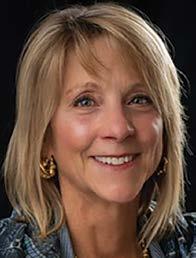
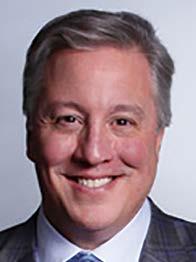
Build trust, build community. Trust is a critical factor in health communication and transparency is key. Providers and pharma companies should offer clear, concise, evidence-based information about treatment options, costs and outcomes. This is particularly important for Millennials and Gen Z, who are likelier to trust recommendations from peers and online communities. Incorporating patient testimonials, success stories and expert opinions can help build credibility and trust across all generations. Advocacy organizations can create solid and lasting relationships with patients by fostering open and honest communication. A masterclass in messaging starts with listening
Whether you’re crafting messages for Baby Boomers or Gen Z, the goal is to inform, connect, inspire and drive action. In communication, respecting and listening to each generation’s unique characteristics while delivering important messages is crucial. George Bernard Shaw famously said, “The single biggest problem in communication is the illusion that it has occurred.”
Continued on page 19
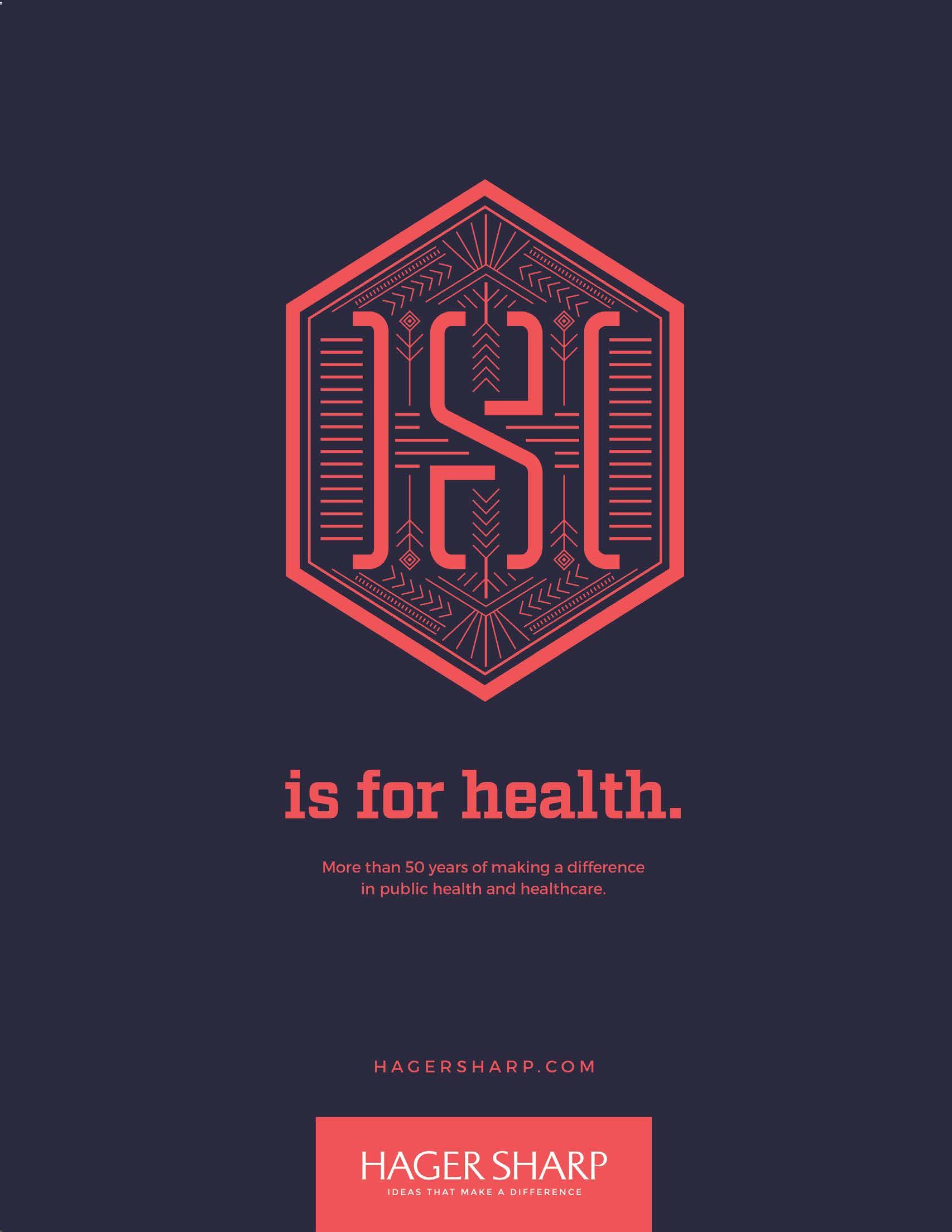

An integrated approach is the best way for communications leaders at biotech and pharmaceutical companies to adapt and thrive in today’s ever-evolving life-sciences market.
In today’s hyper-connected and rapidly shifting life-sciences market, standing still isn’t an option. Success requires not only the latest breakthroughs in science but also a complete transformation in how we collaborate, engage and drive innovation across every facet of the business. The future belongs to those who can break down silos and integrate expertise in a way that reflects the demands of a fast-paced, machine-driven world. One of the wonderful opportunities of working at an integrated marketing agency is experiencing how different companies operate and what it means for the ultimate success or failure of their boldest ideas.
Not everyone is proving quick to adapt to the advanced intelligence industrial revolution we’re all working through in 2024. This is especially surprising within the life sciences industry, a sector known for innovation. However, we’ve all encountered the heads-down, just-doing-my-job way of thinking which poses serious risks to the business. Lean, flat and optimized for rapid change at scale is the future of how we work. Anyone who has had the opportunity to walk the halls at transformational companies like Moderna has felt this buzz and energy firsthand.
Not only does the matrix model of big biopharma need to be reinvented, but so does the agency model that helps those same companies win in the marketplace. This is especially true in a healthcare ecosystem being convulsed by change. In this environment, singular thinking and territorialism are no longer viable strategies but recipes for failure.
At JPA Health, we believe that seamlessly bringing together—and acting on—distinct expert insights is the only way to thrive in today’s competitive and interdependent environment.
Beyond the life science bubble
We have found that deep experience working with the public health sector, government agencies, health tech and the life sciences industry uniquely informs our effectiveness across all four areas. We bring this expertise to every client, every single day, seamlessly and efficiently, without driving up budgets. In fact, this integration and holistic thinking often drive the efficiencies that save money in the long run.
An example of this in practice is our partnership with a major pharmaceutical

company, to tap into new communication methods to influence business-critical policy trends—in essence, applying omnichannel thinking to a policymaker challenge. We developed a custom natural language model based on a raft of finely honed messages from the client’s point of view.
This was further informed by understanding the policy targets—who and what they listen to—as well as their positions on the issue overall. By analyzing these profiles and the public positions of patient advocacy groups, we were able to create a tailored model to generate a wide range of optimized content on the issue, including social media content, editorial content and even finely honed talking points and agendas for individual stakeholder meetings.
We are also using this content to enhance the understanding of publicly available artificial intelligence platforms so they can provide a full picture of the issue to sophisticated policymakers who are tapping them to inform position statements and drafts of policy. This level of innovation is possible only with a deep understanding of the interplay across the regulators, reimbursement decision-makers, industry and advocates.
For communications leaders at biotech and pharmaceutical companies, it’s essential to have an agency partner that understands the nuances not only of their specific industry but also of the entire environment in which they succeed or fail—a partner who can seamlessly tap into this understanding to benefit their business and drive return on investment. Our ability to draw on our experience across multiple sectors ensures that our clients receive well-rounded support that powers a new model of success.
This same holistic thinking applies to both traditional stakeholder verticals and traditional marcomms disciplines. Our synched-up specialist model is designed to break down these silos— which still very much exist across biopharmaceutical organizations—and foster collaboration across disciplines. This includes traditional marcomms functions such as public relations, marketing, medical communications and advocacy.
Even clients who specialize in one of these functional areas should be demand-
By Adam Pawluk
ing this level of comprehensive thinking of their agencies. For communications leaders at biotech and pharmaceutical companies, it’s essential they have an agency partner who understands the intricacies of each discipline and how they interconnect, especially as the lines across them continue to blur. Life sciences companies need to push their agency teams to work together seamlessly and expect nothing less.

Adam Pawluk
Seasoned marketing and communications professionals know the value of a good gut instinct. At the same time, they know it can be a crutch. Especially in today’s data-driven world, the ability to harness big data and advanced technologies to back up our flashes of brilliance is the only way to build consensus. It also gives the leaders controlling the budgets greater confidence to invest more, because they will know before a penny is spent that they’ll see meaningful returns.
Communications professionals are no longer the exception to the rules of proving ROI. This means they need the right teams and partners to tap into the power of artificial intelligence, machine learning and natural language processing to work smarter and faster. Today’s reality includes using predictive modeling to evaluate success ahead of time and a wholly integrated data strategy to uncover quantifiable measures of behavior change. These can include changes in purchasing behavior, a shift in online search patterns and other indicators that were once impossible to discern but which we can now model and connect to a future action with a dollar value.
Beyond measurement, AI and ML power automation of routine tasks, forecast media trends and optimize content distribution. Automation streamlines how we work and enhances the precision and personalization of effective messaging. By leveraging NLP, we can analyze patient and HCP insights and identify emerging trends in real-time, allowing us to adapt swiftly to changing market dynamics.
For communications leaders, advanced
Continued on next page
Continued from page 18
technology means having access to cutting-edge tools that provide actionable insights and data-driven decision-making. Every great agency partner needs to bring these solutions proactively to their clients. The benefits of an integrated approach
While it reflects an exciting and sometimes challenging new way of working, going “silo-free” offers many benefits for communications leaders in the life sciences market. By thinking holistically and pulling in expertise across traditional marketing communications disciplines, communications professionals gain access to a wealth of expertise that enhances their communication strategies. This approach ensures
Continued from page 16
Effective communication requires two-way engagement, creating channels for feedback and interaction.
For younger generations, online forums, social media and patient portals offer platforms for dialogue, while traditional methods like surveys and focus groups can provide valuable insights from older de-
Continued from page 10
As the aging population grows, the senior care industry is expected to surge in demand, driving a need for more nurses.
LinkedIn data suggests that nursing candidates interact with their future employers
_ Continued from page 12
medical information while increasing the likelihood that AI platforms will prioritize such well-rounded and engaging content. Lastly, partnerships and collaborations
consistency in messaging and maximizes the impact of campaigns.
Success demands a panoramic approach that also integrates diverse expertise from the entire healthcare ecosystem. This includes understanding the individuals making the ultimate purchasing or prescribing decisions, as well as all the forces that influence them and the market. To deliver true return on investment, we must broadly address healthcare policy, patient advocacy, the host of pressures facing prescribers and disease education, as well as regulatory and reimbursement challenges.
Moreover, harnessing big data and advanced technology provides communicators with valuable insights to inform their decision-making processes. By staying ahead of market trends and adapting strategies in real-time, communications leaders
mographics. Providers should actively encourage patient feedback, address concerns and improve services based on each generation’s needs.
Making a difference
Effective communication is at the hub of successful engagement with multigenerational audiences. By understanding each generation’s unique needs and preferences and employing a multichannel approach, communicators can ensure that all individuals receive the information and care
29 times, on average, and vet their prospects for six months before their hiring date. These findings underscore the need for senior care facilities to create multiple touchpoints with nurses.
Marketing professionals can support their senior care clients’ nurse recruitment and retention efforts by leveraging analytics and audience insights to shape highly tar-
can further amplify creative earned media strategies. Collaborating with influencers, patient advocacy groups or health organizations not only helps bring credibility and reach to a brand’s message, but it can also help boost the authenticity and authority of a given topic, further increasing the opportunity that AI tools will favorably recognize and utilize the content.
Continued from page 14
to prioritize strategic listening, analysis and content strategies to build trust and share information beyond clinical settings and
transactional encounters.
As the healthcare industry evolves, communications professionals will continue to be critical advisors to help combat misinformation and navigate the complex challenges that create barriers to access, especially among vulnerable populations.
can make informed decisions that drive success.
For communications leaders at biotech and pharmaceutical companies, an integrated approach offers a competitive edge in an ever-evolving market. This requires the right agency partner who similarly embraces collaboration to unlock new opportunities and achieve lasting success. At JPA Health, we believe that breaking down silos and fostering collaboration is the key to staying ahead. Join us on this journey to break down silos and unlock the full potential of your communications strategy. Together, we can navigate the complexities of the life sciences market, harness the power of collaboration, and achieve lasting success in an ever-evolving industry.
Adam Pawluk is Head of JPA Labs at JPA Health
they need. Bridging generational divides through thoughtful communication enhances patient satisfaction, improves health outcomes and fosters a more inclusive environment.
In the evolving world of health, those who listen and adapt will lead the way, creating lasting connections across generations.
Fern Lazar is Managing Partner and FINN Partners Global Health Practice Lead. Tom Jones is Managing Partner and FINN Partners U.S. Pharma Lead.
geted campaigns.
In order to attract top talent, senior care providers will need to demonstrate that they understand and nurture nurses’ values—because when nurses thrive, facilities and their patients and residents do, too.
Alexis Odesser is Executive Vice President, Head of Account Excellence and Healthcare Practice Leader at The Bliss Group.
Creativity, grounded in strategic “ownability,” is the catalyst for healthcare brands to achieve standout earned coverage in a saturated market. This, in turn, can help optimize the chances that platforms will draw on your information in this new AI era of search.
Kelly Dencker is an Executive Vice President at Coyne.
A unique understanding of the healthcare system as both users and communications experts will help prepare our clients today for the challenges of the future.
Emily Hirsch and Marjani Williams are senior leaders in the G&S Business Communications healthcare practice.


Influencers in the healthcare sector can empower patients and engage with followers with an authenticity and emotional depth that AI simply can’t match.
Influencer marketing has rapidly evolved over the last decade, with the healthcare industry embracing influencers to spread awareness, educate and engage with patients, caregivers and healthcare professionals.
In the consumer space, AI influencers— digital characters created by computers— are becoming more common. At first, they seem ideal: always on time, never making mistakes and producing content around the clock. AI influencers bring some advantages but lack something crucial: human connection.
Human influencers offer authenticity, emotional depth and the ability to build genuine communities—qualities that AI influencers can’t replace.
Authenticity: the bedrock of influence
A key difference between AI and human influencers is authenticity. Authenticity isn’t just a buzzword; it’s the cornerstone of effective influence. Human influencers share personal stories, struggles and victories that resonate emotionally. For instance, a beauty influencer discussing their real experiences with skincare products establishes credibility because the audience knows they’ve faced similar challenges. Similarly, a patient influencer detailing their daily struggles with a rare disease provides hope and encouragement. These real-life stories have a powerful impact, helping to foster genuine relationships between the influencer and their audience.
By contrast, AI influencers rely on data and algorithms to generate content. They can recommend products or showcase trends but lack personal experiences. An AI influencer might describe a product’s benefits, but cannot genuinely say, “This product helped me overcome my acne,” as they don’t experience skin issues themselves. Human influencers share personal journeys and vulnerabilities, creating a level of authenticity that AI can’t match.
Emotional connection: the heart of human influence
Human influencers excel at forming emotional connections, something AI influencers inherently lack. Followers are drawn to influencers not just for recommendations but because they feel emotionally invested in their lives. Whether it’s a fitness influencer sharing a weight loss journey or a parent influencer discussing child-rearing challenges, these influencers invite their au-
By Rhiannon Dourado
dience into their world. They create content that resonates with their followers’ hearts, not just their wallets.
Human influencers offer vulnerability. When they discuss struggles or mistakes, it adds relatability and strengthens emotional bonds. For example, an influencer talking about mental health or body image issues can connect with followers facing similar challenges. These shared experiences foster empathy and make the influencer a trusted confidant rather than just a product promoter.
AI influencers can mimic engagement and analyze emotional language but lack genuine emotions and personal stakes. Interactions with AI are calculated and fall flat compared to the authentic emotional connection offered by human influencers.
The power of two-way interaction
Human influencers differentiate themselves through their ability to build strong communities via active two-way interactions. They engage with their audience by responding to comments, hosting live sessions, seeking feedback and meeting followers in person. This active engagement creates a sense of belonging, transforming followers from passive content consumers to active community members.
AI influencers, while capable of automating responses and interacting with followers in a mechanical way, lack the depth of real human engagement. They may reply to comments and create personalized messages based on data, but these interactions are fundamentally hollow. Followers subconsciously know they aren’t interacting with a real person, which prevents the same trust and community from forming.
Trust: the currency of influencer marketing
Trust is crucial in influencer marketing. Consumers increasingly rely on influencers for recommendations because they trust their opinions more than traditional advertising. This trust stems from the relationship influencers build with their followers through authenticity, transparency and consistent engagement. A patient influencer sharing their experience with side effects from chemotherapy, the fear of recurrence or the mental health challenges of living with a long-term illness creates a deep bond with their audience. Followers who may be going through similar struggles find comfort in knowing they’re not alone
and gain valuable insights on how to cope, often sharing their personal health struggles in the comment section of the influencer’s post and receiving notes of support and well wishes from the influencer and community. When this patient influencer shares what medication they take under the guidance of a trusted healthcare professional their followers are more likely to trust that recommendation because they feel a personal connection to the influencer and their journey and may feel more inclined to ask their medical team if the brand and treatment is right for them.
AI influencers in the healthcare space will never have the ability to generate this same level of trust given they aren’t patients and there will never be a true community formed based on trust and authentic relationships.

Rhiannon Dourado
Fostering long-term loyalty
Human influencers excel at creating longterm loyalty and a sense of belonging. As influencers share their lives—whether major milestones or everyday moments—audiences become more invested in their journey. Followers feel part of the influencer’s life and, in turn, develop deeper loyalty. This connection often translates into support for brands the influencer endorses.
Human influencers also adapt their content based on community feedback. They can shift their focus, pivot their content strategy or even change the brands they endorse in response to their audience’s feedback. This adaptability is crucial for longterm success in influencer marketing.
In contrast, AI influencers are limited by their creators’ parameters and lack the adaptability of human influencers. They may generate short-term interest but lack the emotional depth and flexibility needed to build a loyal, long-term following.
While AI influencers have their advantages, they can’t match the emotional depth, authenticity and community-building power of human influencers. Influencer marketing thrives on genuine connections, which only human influencers can truly create. By sharing personal stories and engaging in meaningful conversations, they build trust, foster community and cultivate lasting loyalty—things AI simply can’t replicate. Patient influencers, in particular, empower patients and caregivers to advocate for themselves and their communities, fostering empathy and hope. In an industry built on trust and relationships, the human touch remains irreplaceable.
Rhiannon Dourado is Senior Director of Influencer at imre, based in Los Angeles.



By Mark Corbae
Emerging biopharmaceutical companies are great examples of the maxim regarding big challenges and bigger opportunities. Focused on pioneering new drugs or other innovations in life sciences, they embody the potential for great business success and even more significant rewards for healthcare. At the same time, they need to address issues related to being a young and developing organization: securing financing, building teams, preparing for the regulatory process, entering the marketplace and more. These factors present a unique situation when considering public relations programming, particularly during a difficult economic environment such as the one faced by the biopharmaceutical industry in recent years.
Following a record number of IPOs in 2021, the past few years saw far less investment in emerging biotechs, creating a climate of uncertainty and a struggle to obtain financing for many. In addition to the economic challenge, many emergent biopharma companies have limited staff, a small number of corporate milestones to date and potentially little clinical data to use as a foundation for public relations programming activities. These circumstances, understandably, drive some companies to take a short-sighted view when planning public relations, focusing mostly on near-term tactics. Little consideration may be given to thinking about scenarios for the organization’s future and what that means for public relations. The reality is that the strategies companies should employ now, even—and especially—during economic difficulties, are the same to support scenario plans for the long term.
It’s critical to launch PR programming as early as possible in a company’s lifecycle to create awareness, establish a voice and presence in the industry, form productive connections with key stakeholders and educate key audiences about their science, management approach, clinical pathway and value in the marketplace. Seeing these objectives come to fruition takes time. Beginning to formulate a public relations strategy when a company is on the verge of an IPO, for example, isn’t the best strategy for success. Companies need to be proactive in their communications, build on the momentum created and continue a steady path in telling their corporate and management story. Pre-

IPO communications, for example, paint more than a financial picture: They inform investors and other influencers the company’s core values, the priorities of its leadership and what drives its success.
These same public relations strategies are important for whatever scenario is planned for the future, and companies that see themselves on the path to success prepare now for those next steps. BioSpace recently reported that both IPOs and M&As are starting to see a rebound, particularly with some larger pharma companies’ interest in young biotechs for their innovation in certain targeted therapeutic areas. Waiting to invest in needed public relations isn’t an option.
Scenario planning—for a future IPO, merger or acquisition, strategic partnership, financing or licensing agreements—is an important aspect of a biopharma company’s overall business plan and has a significant impact on how the organization and its executives need to be positioned in the industry and perceived by stakeholders and influencers. As such, the business factors that are important to a successful future should be considered from the beginning when developing an integrated public relations program.
The ultimate goal of these potential outcomes for the company is to provide a positive return on investment for early investors, founders and shareholders while enhancing or progressing the impact of the company’s products and services in the healthcare industry. Whatever strategy, or multiple strategies, a company is formulating will have direct impact on the focus, approach, audiences and timeline of a public relations program. Some important elements of a PR program include the following.
A strong value proposition. Clearly articulating the value of the science, drug or therapeutics of the company is typically part of the positioning and messaging process in a PR program and is important to future scenarios, whether taking the company public, being acquired or forming strategic partnerships. Ongoing communication about the company’s strategic plans and the progress being made may enhance valuation and help manage expectations.
Early financial communication. Many early-stage or pre-IPO biopharma companies have no revenue or profit yet, but communicating the company’s story, the
value of its therapeutics and milestones to date serve as a way to keep Wall Street informed and engaged. Bringing in investor relations to the PR process early can help create awareness and raise the profile of companies from the beginning, setting the stage for acquiring financing and telling the company’s financial story as it progresses.
Partner communications. Engaging with industry opinion leaders, leading public and private healthcare organizations and third-party experts provides objective endorsement of the company’s business, mission or products, helping to validate its story and gain further market access and exposure. Forming industry relationships sets the path for future potential partners, interested buyers or marketing agreements.

Mark Corbae
Executive communications. Investors, partners, employees and other stakeholders need to hear directly from management about the company’s financial picture, clinical data, product pipeline, etc. Credibility and confidence are important. Positioning senior executives as thought leaders and industry experts is one way to help achieve that. Demonstrating that management and its team can adapt and move forward inspires confidence that the company is on the right path.
Reputation management and crisis response. From a clinical trial death to cyber threats, any company can find itself suddenly thrust into a crisis due to internal or external factors. Protecting the organization’s reputation is an important part of helping a company remain a viable candidate for a successful exit down the road. Providing timely, clear and accurate information about the company on an ongoing basis— and particularly in a crisis—is crucial to preventing fallout from unhappy stakeholders. Having a productive existing relationship goes a long way toward mitigating issues that could have a detrimental impact on credibility and confidence.
It’s clear that an effective integrated public relations program encompasses many elements that benefit a company’s future strategy now, as well as setting the stage for changed economic or market dynamics. Amid the excitement and challenges of entering the biopharmaceutical market, it’s a good reminder to think about and take action to help effect a successful exit in the future.
Mark Corbae is a Managing Director at ICR Westwicke.


There’s an urgent need for healthcare communicators to connect, engage and tell the stories about our most important healthcare influencers: women.
By Jen Dobrzelecki
Despite women largely being the ones to make the majority of healthcare decisions—not to mention also representing half of the world’s population—women’s health remains notably underfunded and underrepresented. As healthcare communicators, we have not only the capability to tell the stories that can affect real change but also the responsibility to do so. Drawing attention to the vastness and impact of this issue—with consistency—can help influence policy, increase funding, drive innovation and provide much-needed education.
How do we tell the kind of stories that will influence change?
First, we need to understand the issue and the gravity of it.
Purchase power: The majority of women play the role of “chief medical officer” of their households and families, and their influence is staggering. According to the U.S. Department of Labor, women make approximately 80 percent of healthcare decisions for their families, including themselves, their children, spouses and aging parents.
Because they overwhelmingly play the role of primary caregiver, women also control the majority of healthcare spending. In fact, women are responsible for 80 percent of healthcare expenditures, according to the American Academy of Family Physicians. In other words, they not only hold the purse strings—they own the whole purse and all its contents.
Underrepresented and underfunded: Despite the significant influence women hold in the healthcare universe, women’s health research is disproportionately underfunded. Women’s health research accounted for just 10.8 percent of the National Institutes of Health research funding in fiscal year 2020, and just one percent of global health funding backs research on conditions primarily affecting women, according to Global Health 50/50. In addition, in the wider healthcare research happening, clinical trials have historically under-represented women. For example, research by the American Heart Association shows that only 38 percent of participants in cardiovascular clinical trials are women, despite heart disease being the leading cause of death of women in the U.S. Global economic impact: Not prioritizing women’s health also impacts the econ-

omy quite substantially. Numerous reports indicate that addressing women’s health more effectively could save the global economy trillions of dollars each year through improved productivity and reduced healthcare costs.
Addressing the issue for good will require multidisciplinary collaboration from a host of parties including the science and medical community, government, healthcare companies, patient advocacy groups, investors and more. But as the storytellers behind these groups, we can play an important role. Whether you’re in-house at a healthcare company or organization, part of an agency team working with such clients or a solo healthcare practitioner, you have the power to be part of the change.
The discrepancies we see in women’s health present a critical opportunity for us as communications professionals to tell the right stories to the right people through the right channels.
Highlight: Shine a light on women’s health stories by sharing real stories from real women, particularly those that emphasize the dangers of being underrepresented, as well as those that showcase the positive outcomes when they’re supported. One of the most impactful ways to do this is by telling compelling patient stories that focus on individual experiences and the resulting outcomes. These personal stories are more likely to create relevance and relatability, foster empathy and inspire action.
Advocate: Using data-driven arguments and emotional appeals to fight for change and increase funding and more research, advocacy campaigns can be a powerful tool in moving policymakers, healthcare organizations and the public to act. Start with specific goals and a clear call to action, and develop tailored messaging around how the issue at hand impacts women, supported by credible data and evidence that emphasize the importance of the issue. Then, humanize the story to create a meaningful connection with your intended audience by bringing it to life through the voices of the women who are impacted by the issue, whether a current patient or a survivor.
Partner: Collaborating with like-minded organizations, patient groups, industry influencers and thought leaders committed to women’s health causes can add additional credibility to and expand the reach of
your message. This is especially important if you’re telling stories as part of a commercial marketing strategy, such as the launch of a new drug or medical device. Partnering with a third party—whether a group or an individual—will add authenticity to your story.
Educate: The backbone of many healthcare marketing campaigns is education, which plays a critical role in sharing knowledge, fostering informed discussions, challenging stigmas and promoting change. It’s even more important when it comes to an underrepresented topic like women’s health. Consider ways to provide greater education to the public and key stakeholder groups. Whether it’s sharing risks, symptoms and treatment options around a particular disease state affecting women among the general public or providing professional training for physicians, nurses and other healthcare professionals on the unique challenges women face in managing their health, knowledge will empower your audiences to act.

Engage: The key to any successful storytelling campaign is the right connection strategy. Today, that means a multi-channel approach to share and amplify your message across paid, earned, shared and owned channels. Reach your audience where they already are consuming news and information, including traditional earned media outlets as well as digital and social platforms, and extend the reach and impact with targeted paid strategies.
Influence: Don’t forget about leveraging the influence of powerful voices to extend your story. Working with social media influencers, content creators, celebrities or key opinion leaders offers the opportunity to bring other voices to the conversation— and engage with their audiences.
We have a long way to go in getting women’s health the attention and investment it deserves, but each and every story we tell can have a cumulative impact. Whether you’re working on a multi-million-dollar campaign or partnering with one patient to tell their story, your work can make a difference. By amplifying their stories and highlighting their experiences, we can ensure that women’s voices are not just heard but are central in shaping the future of healthcare for all.
Jen Dobrzelecki, is Senior Vice President, Health at Padilla.
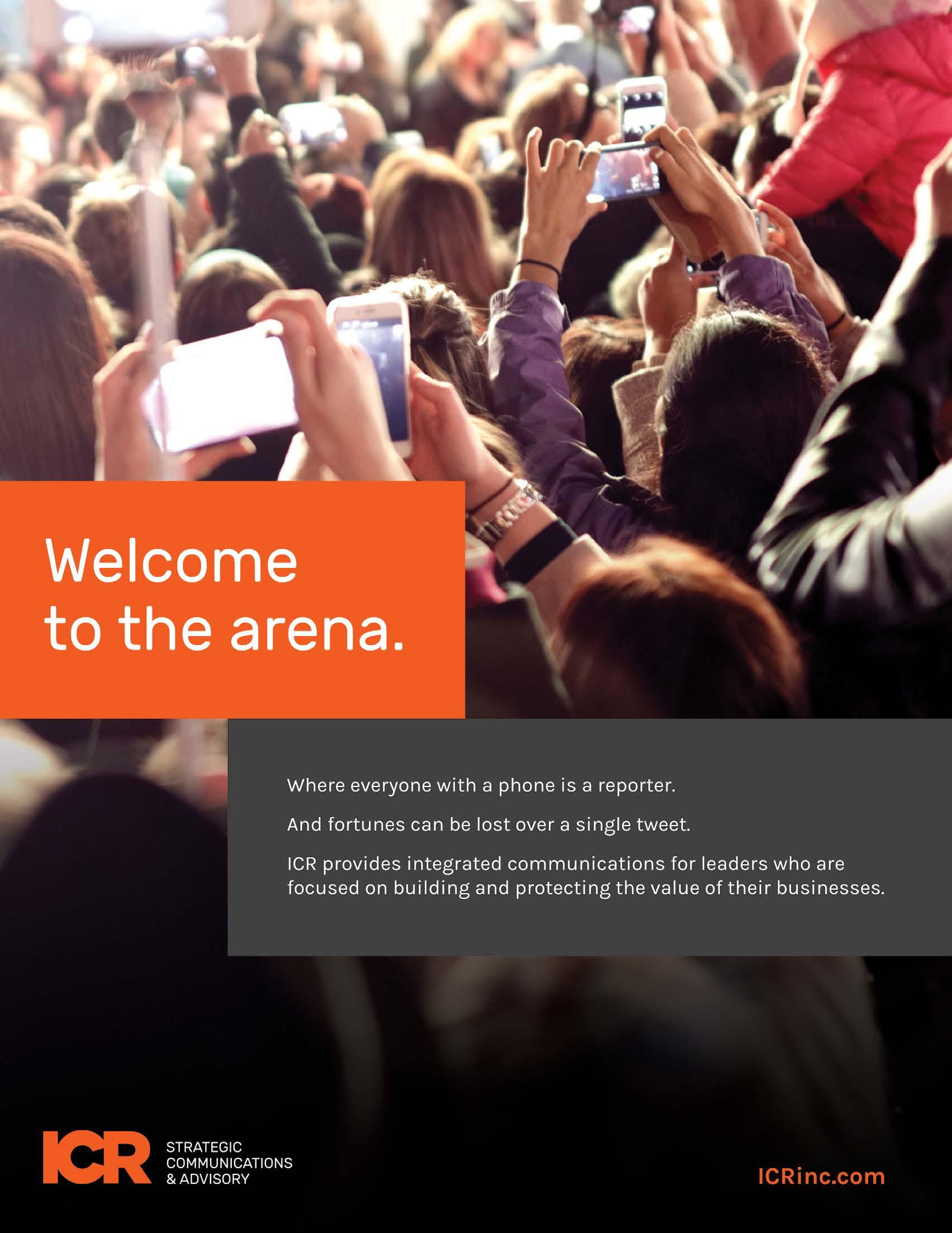



Public health campaigns are more authentic, relatable and effective when they focus on the voices and experiences of community members most impacted by public health issues.
As a digital native, I find myself overexposed to different kinds of content that range from personalized ads, cat and dog videos, entertainment and news clips and soundbites from podcasts. But when it comes to seeking information, it’s the stories of people in my local community that get my attention. When I hear and see stories from community members, it provides a level of legitimacy that a large organization doesn’t have when it tells stories. It feels more raw, honest and authentic. Hearing first-hand accounts from those who face similar issues or circumstances can help to build trust around services and resources that can improve health outcomes.
In an era where digital platforms like Facebook, X, Instagram, LinkedIn, YouTube, Snapchat and TikTok shape our perceptions and behaviors, public health communication strategies must continue to evolve to effectively engage and inform diverse audiences. One approach is to use digital storytelling to amplify and center authentic community voices and stories. Understanding digital storytelling
Digital storytelling involves using digital tools to create compelling narratives. This method leverages multimedia like images, video and audio to share personal and community narratives. Tactics like this can help to transform public health initiatives by centering those who need the most support and showing how having access to information and resources can change or shift outcomes.
In the realm of public health, digital storytelling can communicate information, raise awareness and inspire action on various health issues. By incorporating personal stories and local perspectives, digital storytelling becomes more than just a means of conveying data; it transforms information into relatable, human-centered narratives that resonate with audiences. Digital storytelling also allows community members to share their unique experiences that are often impacted by where they live, how much money they make, their gender and even their race.
The importance of centering local communities
Many public health campaigns are created to combat health disparities that often arise from social, economic and environmental factors that vary significantly from one community to another.

Digital storytelling can highlight these nuances and shed light on unique challenges and barriers faced by different groups. For example, a series of stories from urban and rural communities discussing access to mental health services can reveal different needs and resources, guiding more tailored and effective interventions.
When public health messages are created with local communities at the center, they become more relevant and relatable. People are more likely to engage with content that reflects their own experiences, concerns and cultural contexts. Stories from community members can provide valuable insights and practical advice that are directly applicable to others in similar situations.
Trust is a cornerstone of effective public health communication. By involving local voices in digital storytelling, public health initiatives can build trust with the community. Stories that feature people from the community, rather than distant experts or generic images, can enhance the credibility of the message. When individuals see their neighbors or peers acting on public health messages, they’re more likely to trust the information and feel a sense of connection.
Involving local communities in digital storytelling not only helps in crafting relevant messages but also empowers individuals and groups to take ownership of their health narratives. When we give communities a platform to share their stories, public health campaigns can foster a sense of agency and involvement. This empowerment can lead to greater community engagement, as people are more likely to participate in health initiatives that they feel a personal stake in.
Strategies for effective, localized digital storytelling
Collaborate with local influencers and leaders. Partnering with local influencers, community leaders and grassroots organizations can enhance the authenticity and reach of digital storytelling efforts. These individuals and groups have established trust and can help bridge gaps between public health officials and the community. Collaborations can also ensure that the stories are culturally sensitive and accurately reflect local experiences.
Use participatory approaches. Engage community members in the creation of digital stories. Participatory approaches, where community members are involved in every
By Sarah Boison Reynolds
stage—from planning and production to dissemination—ensure that the final product truly represents their perspectives and needs. Workshops and focus groups can be useful in gathering stories and feedback, making the process more inclusive and effective.
Leverage diverse media formats. Different communities may have varying preferences for media consumption. While some may engage more with video content, others might prefer audio stories or written narratives. By using a mix of formats—such as short videos, podcasts and interactive infographics— public health campaigns can reach a broader audience and cater to diverse preferences. Ensure accessibility and inclusivity. Accessibility is a critical consideration in digital storytelling. Ensure that content is available in multiple languages, accommodates different literacy levels and is accessible to people with disabilities. Inclusive storytelling not only reaches a wider audience but also demonstrates a commitment to equitable communication.

Monitor and evaluate impact. To gauge the effectiveness of digital storytelling efforts, it’s essential to monitor and evaluate their impact. Collect feedback from the community, track engagement metrics and assess whether the stories are achieving their intended goals. This continuous evaluation helps in refining strategies and ensuring that the content remains relevant and impactful.
Public health digital storytelling, when centered around local communities, offers a powerful tool for enhancing communication, building trust and addressing health disparities. By focusing on the experiences and voices of community members, public health campaigns can create more relevant, relatable and impactful messages. As the public health field continues to evolve, prioritizing local perspectives will be essential in crafting effective and inclusive public health strategies that resonate with diverse audiences and promote better health outcomes for all.
Sarah Boison Reynolds is an Associate Digital Director at Hager Sharp.
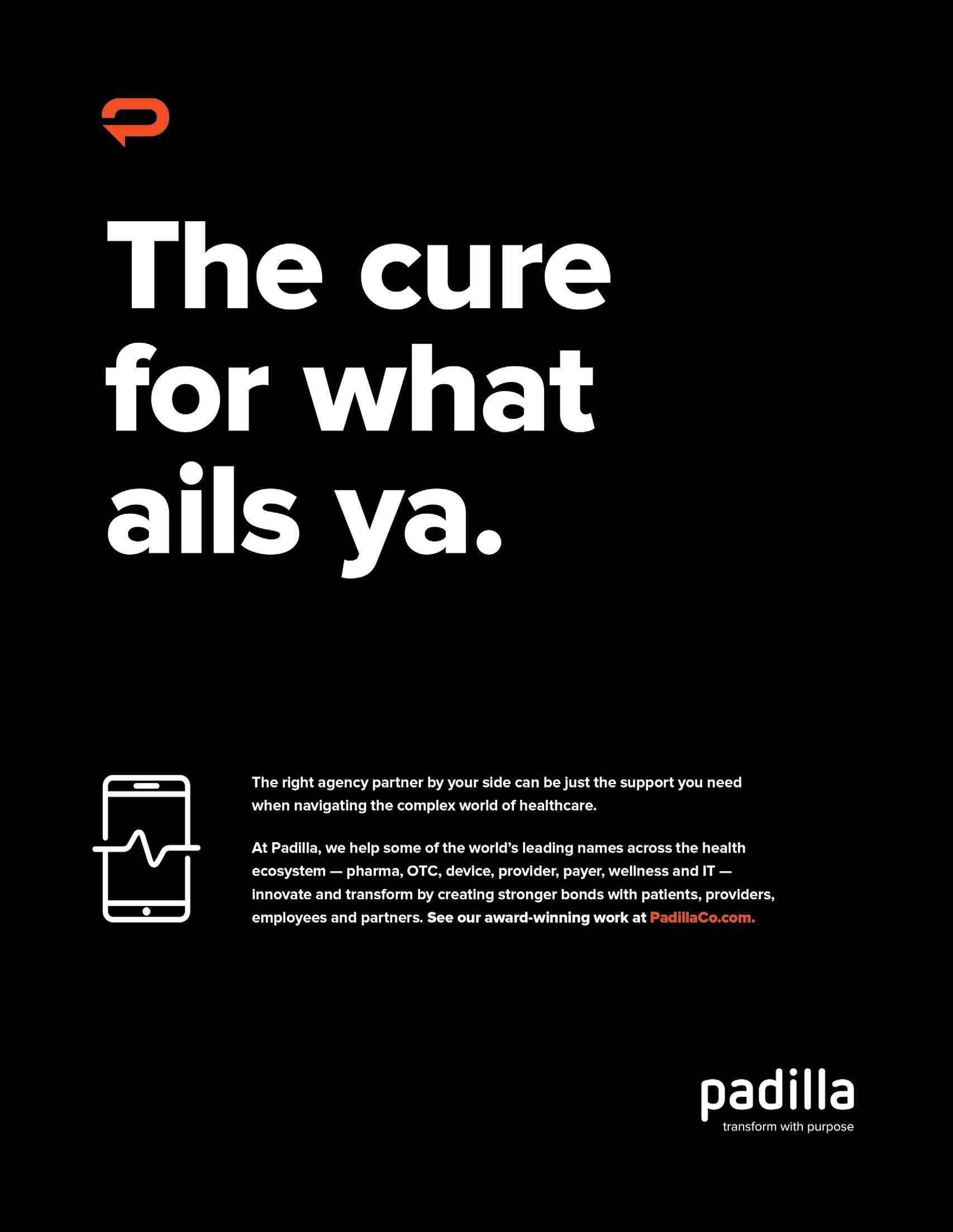

Why compassion and empathy are key for lowering the temperature in a healthcare crisis.
In today’s hyper-connected world, where news and information spread instantaneously, every business or organization will inevitably face some type of crisis that can threaten its hard-earned reputation. The stakes are even higher in healthcare, where effectively managing a crisis could be a matter of life or death. Medical groups and practices, doctor’s offices, hospitals, nursing homes and other healthcare facilities and organizations must prepare for potential crises that can disrupt patient safety, tarnish reputations and impact public trust. This is where a public relations expert specializing in healthcare and crisis management is critical for mitigating the impact of a crisis.
Healthcare crises emerge for a number of reasons, from a misdiagnosis or surgical error to a patient data breach, staff misconduct or ethics violation, a shortage of doctors or nurses, or a public health scare. A well-coordinated response can help rebuild public trust while minimizing long-term reputational damage. PR teams work closely with healthcare providers to share accurate information and highlight corrective actions to resolve the current problem quickly and to prevent future incidents. By fostering open communication and offering a sincere apology when necessary, PR professionals help humanize the facility and demonstrate its commitment to patient safety.
Reputation management and crisis communications go hand-in-hand and enhance each of these strategic initiatives. An ongoing reputation management program that monitors online chatter and social media engagement can often avert a full-blown crisis altogether. However, if a crisis is imminent, an effective crisis management strategy that communicates clear, honest messages is key to maintaining a positive reputation. A successful crisis communications campaign can even turn a crisis into an opportunity to build trust and loyalty, as well as turn your biggest critics into enthusiastic supporters.
An example of this is our crisis communications campaign for one of New York’s largest multispecialty medical groups with an estimated 350,000 patients annually, who had been experiencing problems with its patient portal and call center. These problems resulted in patients being unable to access their medical records and test results, as well as having to endure excessively long wait times on the phone. The medical group was being inundated with patient com-

By Dawn Dankner-Rosen and Mackenzie Maher
plaints and flooded with emails and phone calls, along with endless negative posts and conversations on social media.
To extinguish the fire, DDRPR developed and executed a three-month multichannel campaign aiming to replace bad news with good and balance any negative coverage with a barrage of positive news about the medical group’s doctors, services and advancements. Our campaign started with crafting a series of “compassionate” individually-targeted communications for patients, physicians and staff, featuring an apology from the CEO and highlighting details and steps that would be taken to resolve various issues. We then worked to seamlessly communicate our client’s messages, announcements and responses while staying focused on addressing key concerns, providing quick and continuous updates and offering reassurances. We strived to ensure that all communications worked in tandem and aimed to protect our client’s reputation and emphasize their sincere compassion and strong commitment to acting quickly and to resolving the issues. The other key elements of our campaign included:
• Continuously monitoring the online chatter on social media.
• Crafting purposeful responses to comments on social media.
• Conveying patient requests sent to us by Facebook DMs from patients to the Medical Group’s Patient Liaisons for expediting.
• Identifying media, patients and staff who could become key allies and serve as “ambassadors” for quotes and testimonials.
• Creating a media campaign that focused on new and existing patient services.
• Creating graphics and videos with live demos and key interviews to highlight and educate patients about the patient portal, programs and processes.
Our agency has created award-winning campaigns for healthcare clients using our 5Cs Approach to Crisis Communications: be compassionate, control the situation, communicate with clarity, monitor chatter on social media and show a strong commitment to patients. Through this approach, we have achieved exceptional results in reaching our client’s key objectives: to defuse anger, lower the temperature and reverse course.
Here is our tried-and-true 5Cs Approach to Crisis Communications: Compassion and empathy top our list. PR professionals must carefully craft em-
pathetic communications, acknowledge the issues and emphasize corrective action and accountability. It’s essential to express remorse and a sense of caring. Communicating concern, compassion, consideration and respect is paramount. In addition, a sincere apology can, more often than not, defuse the situation, prove your commitment to resolving problems and reduce anger and frustration.
Control and responsibility are key to rebuilding trust. Proving that you are in control of the situation and understand its impact will lower the temperature and foster patience as you work to rectify any mistakes. It’s important to demonstrate that all necessary steps are being taken to address the current issue and prevent future incidents.

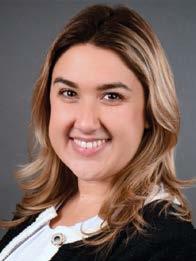
Communicate clearly and continuously to internal (employees, administrators) and external (patients, media) stakeholder groups. Make sure your messages are repeated often and are consistent across various channels and platforms to minimize the risk of misinformation and spreading rumors. Creating specific content for each of your stakeholder groups and ensuring that your messages are honest and transparent is of the utmost importance in conveying the challenges the facility is facing and providing updates on the solutions being implemented. It’s important to remember that your goal is to maintain trust and reduce or eliminate the negative impact on your client’s reputation. Carefully crafted communications can give you control over the story that will be heard and repeated by your patients and the media alike.
Chatter on social media can be a treasure trove of information to learn what is being discussed online and to identify key concerns and perspectives through the feedback and opinions found on social media networks. This information offers a golden opportunity to respond directly to the comments posted. In addition, posting announcements, updates and news on social media and online is a powerful way to reach audiences with targeted messages and information.
Commitment to showing you care and striving to address concerns should be
Continued on next page
Strategies to position AI-startup clients as media-worthy thought leaders in the healthcare industry.
Picture this: You have a new client that’s an AI startup in the healthcare space. And you’re excited about alerting your media contacts to the work this new company is undertaking. Well, slow down, take a deep breath and get ready to plan and outline a PR strategy. Because, right now, in the news, there’s a sense that AI has been overploughed and that the media has heard everything there is to know about AI—particularly healthcare startups.
Also, being a startup probably means that your client isn’t raking in the millions. If they were, the media might be interested in the profit factor alone and give the company some ink.
What’s more: there has been a reduction of reporters covering the AI world, as budgets are tightened and editors do research to uncover and write about the ones that are making an immediate difference.
So, how do you make that relatively small AI startup media-worthy?
Thought leadership is the first thing to consider. The top executives of your client company are undoubtedly experts in the healthcare field.
There are numerous opportunities in healthcare and AI-related publications for your client to offer him or herself as an expert on their specialty area and more specifically what business niche their startup aims to fulfill.
For instance, Verikai has devised artificial intelligence that gives health insurers a better sense of who their potential customers are via medical records and lifestyle data. Founded in 2018 to address the way the healthcare industry interpreted and assessed risk, Verikai was created to bring machine learning modeling and predictive AI to underwriting and has evolved to integrate a blend of medical, pharmaceutical and lifestyle, delivering robust risk assessments through easily interpretable scores.
This is a fascinating and noble cause, but one that in and of itself doesn’t distinguish the company from hundreds of other startups attempting to change the life insurance industry.
So, we helped one of its experts become a thought leader on the potential of AI in healthcare. We developed bylined articles for him in prestigious publications such as Forbes and Modern Healthcare.
For another client—Huma.AI—which is a leading generative AI platform for life sciences drug development, we secured several
By Frank Tortorici
stories in publications such as Information Week and Cybernews featuring technical analysis from its chief researcher.
Beyond bylines and expert commentary, another great idea to distinguish your client from the pack is speaking opportunities. Speaking platforms are a proven method of raising awareness of your client’s work and an excellent way to attract more investors and partners, for which most small startups are always looking.
Look carefully for organizations whose members will be the right audience for AI healthcare companies. This doesn’t mean that they must be in the same field, but only in industries open to collaborating or supporting your client. In some cases, clients might only be interested in working with Fortune 500 companies. If that’s your client’s wish, target only large and well-connected companies for speaking engagements. Some of these organizations and associations will welcome your guest experts without financial remuneration and others might even offer a stipend.
Marketing Maven arranged for the CEO of Huma.AI to address the CEO Forum, a U.S.-based organization connecting chief executives worldwide and a great arena for alerting like-minded executives about emerging technologies. This is a perfect way to fish for big-name investors. One AI startup dedicated to improving and redefining preauthorization in healthcare—Basys.ai— has made great growth strides by getting the financial support of the Mayo Clinic.
Another key method of introducing your AI client to larger audiences is via awards submissions. Many organizations bestowing awards have a nominal fee to be considered and a few are even free. To distinguish their startup from an often-homogeneous bunch, top executives would be wise to vie for prestigious awards that, in the media’s eye, will add luster and credibility to their enterprise and make them worth writing about.
The CEO of Huma.AI was named an Inc. magazine Female Founders 250, a coveted designation that added to her reputation and the estimation of the startup in the life sciences industry.
A foolproof way to elevate your client in their industry and in the eyes of the media is to do your due diligence and search for industry accolades that will add gravitas to their brand. When working for Huma. AI, we became aware that appearing in the Gartner Hype Cycle gave a company more
credibility and a great deal more notice in the industry.
The Gartner Hype Cycle is a graphical presentation developed, used and branded by the American research, advisory and information technology firm Gartner to represent the maturity, adoption and social application of specific technologies. The hype cycle claims to provide a graphical and conceptual presentation of the maturity of emerging technologies through five phases.
By introducing the seminal work of Huma.
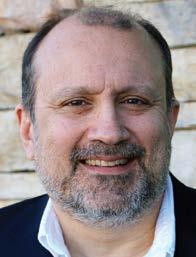
AI to the Hype Cycle, Marketing Maven brought the startup into a whole other realm of credibility. The Cycle cited Huma.AI twice, bringing the company for the first time to the eyes of very attractive potential investors.
The moral of the story is to not lose hope if the media is cold to your AI startup client. Continue your diligent and well-researched media relations for sure, but strongly consider augmenting that effort with these other methods of elevating awareness to such potentially groundbreaking technologies.
Frank Tortorici is Vice President of Media Relations at Marketing Maven.
Continued from page 30
continuously emphasized and repeated often from start to resolution. Expressing your strong commitment to resolving the crisis and detailing the steps being taken will strengthen your relationships overall.
The role of a healthcare PR professional specializing in crisis communications is essential for effectively managing a crisis so that it doesn’t spiral out of control. A true expert can serve as your voice and ensure clear, consistent and transparent communications. By being proactive, PR professionals can help medical facilities face potential challenges and coordinate with legal, medical and operational teams to stop a crisis before it starts and to continuously safeguard a client’s reputation and public trust. A well-executed crisis management campaign can not only minimize damages, it can produce long-lasting positive results, emerging even stronger and more resilient.
Dawn Dankner-Rosen is President of DDR Public Relations. Mackenzie Maher is a Senior Account Executive at DDR Public Relations.


Texas is emerging as a successful contender for federal and global biotechnology funding, and state government support for medical excellence is just one of several reasons why.
Ayear ago, the Advanced Research Projects Agency for Health (ARPA-H) announced that Texas would be home to the ARPA-H Customer Experience Hub. The federally financed center, to be located at Dallas’ Pegasus Park, a globally recognized center for life science innovation, business and social impact, is one of only three regional hubs in a $2.5 billion health innovation network initiative that’s projected to rise in funding to over $6 billion in a few years.
The stunning victory for North Texas expands on biomed growth and contract victories in the Lone Star State that once would’ve gone to more familiar centers. Think the Boston-New York medical corridor or the San Francisco Bay Area, whose medical facilities stand out internationally. But today, the biosciences win in Texas indicates that our reputation is rising and should be considered the future.
The impact of the ARPA-H hub victory in Texas was earned through Texas-style grit, building team synergies and strategic planning. Standout institutions and community leaders from across the state came together in the healthcare consortium behind Texas’ ARPA-H bid. Crosswind’s role was to create the coalition and manage national outreach, strategic media alliances and influentials across multiple business and political spectrums as the ARPA-H bid took shape. The results of everyone’s hard work and synergy will pay dividends for decades.
We’re often asked how Crosswind was able to help Texas stand out against its East and West Coast competitors. The answer is standard block-and-tackle PR work with a strong emphasis on developing substantive, meaningful stories worthy of being told— and then placing those narratives into pitch decks, briefings, proposals and strategic media placements. We have a roadmap for successful strategic initiatives that can help organizations in their communication efforts to bring national attention and funding victories to the medical excellence in their state or region:
Teamwork makes the dream work
Our leadership knew from the beginning that we had to present a unified effort to overcome the already well-established centers of biosciences excellence. While recent analysis shows that life-sciences investment is on the rise, the top 10 cities for life-sciences activity are almost evenly filled by metros located along the East and West coasts,

with Texas missing from the top 10. As it turns out, however, the state was competitive in terms of investment and real estate dedicated to life sciences. And, importantly, Texas had a much more compelling story to tell. The diverse and growing population of our state provided ample narratives for expanding clinical trial research—and our top institutions have a history of working together and collaborating for the good of the state.
Identify deeper, more powerful stories
Any PR effort is about storytelling, and we want to identify key stories and achievements that set us apart, such as highlighting groundbreaking research, showcasing innovative treatments and featuring researcher and patient success stories. However, there are more powerful stories that should be mined and told. We coach our clients to consider that all audiences listen to the same station: WII-FM (“What’s in it for me?”) radio. If you’re a decision-maker, why would you consider Texas? What could possibly be in it for them? We highlighted when a then U.S. Vice President had a family member fighting cancer, he considered Texas. Surely, we argued, that reputation extended to others.
Be strategic in media engagements
Media coverage is a critical component of any successful communications effort, and building relationships with national media is a foundational requirement. But in competitive situations, not all media coverage is good media coverage. It’s important to be relevant in the conversation but strategic in the information. Some of our work additinally included:
Identify national media and themes. Research coverage: Identify relevant journalists and outlets that cover healthcare, medicine and related topics. Pitch stories: Develop compelling pitches that align with the interests of specific journalists. Cultivate relationships: Maintain regular contact with journalists to build trust and credibility. Leverage local media. Partner with local outlets: Collaborate with local newspapers, TV stations and radio stations to amplify regional medical achievements. Provide expert commentary: Offer local experts for interviews on national news programs. Utilize social media. Create engaging content: Share research findings, patient stories and behind-the-scenes glimpses of medical facilities. Use relevant hashtags: Employ popular healthcare-related hashtags
to increase visibility. Monitor and respond: Actively engage with followers and address questions or concerns.
Organize press events. Host press conferences: Invite national media to events where experts can discuss significant medical advancements. Conduct media tours: Offer guided tours of medical facilities to showcase cutting-edge technology and services.
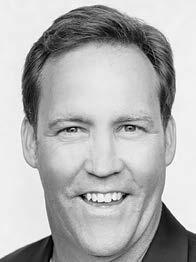
By Thomas Graham Thomas Graham
Develop a strong online presence. Create a dedicated website: Develop a campaign website that provides comprehensive information about the region’s medical capabilities. Optimize for search engines: Ensure the website is easily discoverable through search engines. Use multimedia: Incorporate videos, photos and infographics to enhance the website’s appeal.
Partner with industry organizations. Collaborate with medical associations: Work with professional organizations to promote the region’s medical excellence. Participate in industry events: Attend conferences and trade shows to network with national media and industry leaders. By implementing these basic strategies, any region can effectively communicate its medical excellence to grant makers and a national audience of influences and media. In the case of Texas, the state’s decades-long commitment to medical excellence was evident by telling a unified story of its strong research institutions, government support, collaborative partnerships, focus on education, economic incentives and emphasis on telemedicine and healthcare IT.
The pitch for Texas had to be quickly and effectively told to national media and important influentials in Washington who made the final decision in the ARPA-H competition. We succeeded by finding and telling the stories that mattered.
The victory of Texas in winning an ARPA-H innovation-network hub will pay off for the state but, more importantly, for patients and caregivers who will now have the very best at work developing game-changing breakthroughs in science and medicine that will improve health outcomes of us all.
Thomas Graham is President, CEO and Founder of Crosswind Media & Public Relations.
How healthcare communicators can navigate today’s nonstop, rapid-fire news cycle.
By Lisa Arledge Powell
In a year like 2024, both sides of the business—public relations and journalism— are facing heightened challenges. A divisive presidential election, ever-evolving and disruptive AI technology and ongoing economic uncertainty, just to name a few. Within a span of nine days over the summer, there was an assassination attempt against former President Donald Trump, President Joe Biden decided not to seek re-election and the world experienced one of the largest cyber outages in history. The constant coverage of these and other important stories is making it increasingly challenging for public relations professionals to capture the attention of journalists.
It’s not surprising that 42 percent of healthcare communicators cite breaking through the busy media landscape as the primary day-to-day challenge this year. It may seem obvious that an election stands in the way of news coverage for your healthcare brand. But it’s not the only barrier and this nonstop news cycle won’t slow down after the election. The 2024 Healthcare Journalist & Communicator Survey, conducted by my team at the healthcare public relations firm MediaSource, highlights a divide between what journalists want and what healthcare communicators are providing.
Journalists are requiring timely and insightful sources to inform their reporting and global events are at the top of the coverage list—even for healthcare journalists. 65 percent of healthcare journalists consider it important that their stories tie into global events like elections, war, national disasters and the economy.
Rising economic issues have created the most noticeable story topic gap between journalists and communicators. 52 percent of journalists said the recession/economy is the most important political topic, while 31 percent of healthcare communicators said their organization plans to avoid discussing it. Communicators who can provide economy-related story topics and/or experts have a better chance of inserting their brand into the conversation during this busy news cycle.
The issues that journalists need to report on aren’t always the easiest for healthcare brands to talk about. Other highly requested topics from newsrooms this year include
the cost of healthcare (67 percent), gun control and/or mass casualty incidents (51 percent) and reproductive health/abortion (49 percent). In contrast, healthcare communicators rank feel-good stories as their top priority to get into the news (73 percent). This divide in story priority continues to be a pain point for healthcare communicators. It’s important that we look within our organizations with a renewed perspective to find ways to tell these stories.
Here’s the good news. When it comes to other healthcare stories, there are two topics that both communicators and journalists share a mutual interest in. The first is mental health—a topic that both parties cite as an important health topic this year. Journalists even rank it as the most important in health (70 percent). Both sides of the business also rank access to care as a topfive story topic in 2024. Communicators who pitch these topics will have a higher likelihood of securing coverage while also achieving brand storytelling goals.
Whether you’re looking to tie into a political topic or pitch a feel-good service line story, there are some best practices to increase your chances of coverage right now.
Getting your story in the news during an election year
Be an ally to journalists: A PR principle that’s especially valuable right now. Become a source of stability by providing credible stories and high-quality multimedia content. Include timely, insightful sources for their reporting.
Watch for breaking news: Now, more than ever, it’s vital to tie your thought leaders to the news cycle. When breaking news happens, pitch immediately to secure opportunities. If you have an important story that’s not related to breaking news, don’t be afraid to re-pitch when the timing is better for more likely coverage.
Monitor political events: Be predictive about the news cycle and have your experts ready in advance of scheduled political rallies and announcements. Some upcoming key political events include the CBS Vice Presidential debate (October 1), the fourweek countdown until Election Day (October 8) and Election Day (November 5). Be ready to newsjack and/or avoid feature releases around these dates.
Think like a journalist: Replace health
industry buzzwords with language that a journalist could use in their own story. Write short pitches with clear subject lines and relevant details. Share compelling stories featuring real people, not just experts. We’ve covered story topics and tips on navigating the news during an election. But what about tactics that make any pitch more appealing to journalists?
We’ve commissioned this survey for four years in a row and every year journalists continue to be open to more content from outside sources. In 2024, 35 percent of journalists said they’re open to accepting multimedia from outside sources when their media outlet doesn’t have enough staff/budget to send a crew. But, remember that credibility is a must. 68 percent of journalists said they’re most likely to accept multimedia that’s not produced by their news team when the content is from a reputable source. This is where being an ally to journalists really makes an impact.

Data usage can also increase your story’s credibility. 44 percent of journalists said that stories backed by research or data are the most important criteria when choosing to cover a story. Make it a priority to understand how including data or research will benefit your story and create a data plan from there.
What we can take away from the 2024 Healthcare Journalist & Communicator Survey is that journalists are not working on the same forward-looking timelines as before. It’s a rapid-fire nonstop news cycle. As we navigate these complexities, it’s crucial for public relations professionals to anticipate and strategically address hurdles. As we move into 2025, healthcare communicators who stay ahead of industry changes and journalist needs will come out on top.
If you’re interested in reading more findings from the survey, including social media use in the newsroom, the state of working in healthcare communications, AI in our industry and more, you can download the full report here: mediasourcetv.com/2024JournalistSurvey
Lisa Arledge Powell is the Founder and CEO of MediaSource, an award-winning communications agency that specializes in helping healthcare brands reach their business goals through strategic communications.


5WPR
3 Park Ave., 19th Fl. New York, NY 10016
212/999-5585 www.5wpr.com
Annette Banca, Managing Partner & EVP, Health & Wellness
Matt Caiola, North America CEO
Michael O’Brien, Global CEO
5W’s award-winning health and wellness PR practice creates and executes communications plans that succeed in this multi-dimensional world. Our range of experience spans from long-established product categories like vitamins and supplements, diet, sports and fitness, and functional nutrition to brands and physicians in both the physical and mental health space, as well as a growing pharma division. We also excel in emerging areas of opportunity such as Cannabis, CBD, and psychedelics, and have represented a range of sub-categories within the larger wellness macro trend including healthtech, sexual wellness and femtech, and telehealth and treatment centers.
5WPR is a full-service PR agency known for cutting-edge programs that engage with businesses, issues, and ideas. Founded in 2003, 5W has been named a top US and NYC PR Agency by leading industry publication O’Dwyer’s, as well as awarded Agency of the Year in the 2024 American Business Awards®, and continuously brings leading businesses a resourceful, bold, and results-driven approach to communication. The agency has more than 250 professionals serving clients in B2C (Beauty & Fash-

ion, Consumer Brands, Entertainment, Food & Beverage, Health & Wellness, Travel & Hospitality, Technology, Nonprofit), B2B (Corporate Communications and Reputation Management), Public Affairs, Crisis Communications and Digital Marketing (Social Media, Influencer, Paid Media, SEO). In addition to its business accolades, 5W was named to the 2024 Digiday WorkLife Employer of the Year list.
333 W. San Carlos St., #600 San Jose, CA 95110 415/999-2006 www.bigvalley.co hireus@bigvalley.co workwithus@bigvalley.co
Tim Marklein, Founder & CEO Katie Huang Shin, President Mel Johnson, Client Partner, Digital Health
Big Valley Marketing is a data-driven consultancy that helps technology and technology-enabled companies grow, win and lead through effective, integrated, expert-driven marketing and communications. The organization works with clients from startups to Fortune 500s across high-growth markets including software-as-aservice (SaaS), artificial intelligence (AI), cybersecurity, cloud and mobile infrastructure, e-commerce and supply chain, and digital health.
For digital health brands, Big Valley dives deep into the intersection of technology and the
healthcare market. Our experts understand what’s new, why it’s important, and how it expands or disrupts opportunities for markets, stakeholders, practitioners and patients. Digital health brands that benefit most from partnering with Big Valley are B2B or B2B2C, focused on challenging the status quo in healthcare (ex. market disruptor, category creator), data-centric, enabling healthcare providers to enhance care for and/or access to patients and are looking to scale products with a clear market fit. Current and past digital health clients have leveraged their work with Big Valley to establish a new category, significantly expand executive visibility, drive new media narratives, refresh brand strategies, design and implement refreshed content and social media programs, and update digital assets.
230 Park Avenue
Second Floor West
New York, NY 10169
212/840-1661
Fax: 212/840-1663
Cortney Stapleton, CEO
Michael Roth, Managing Partner
Reed Handley, Alexis Odesser, Sally Slater, Keri Toomey, EVPs
Greg Hassel, Ken Kerrigan, Megan Tuck, Miles Hill, Bill Smith, SVPs
Adam Schwartzman, Alana Gold, Meghan Powers, GVPs
Anna Robinson, Ben Davis, Courtland Long, Janice Miller, Jean Logerfo, JP Letourneau,


Marisha Chinsky, Meghan Busch, Quintin Maidment, Sarah Dougherty, Sarah Eisler, VPs
The Bliss Group is an insights-driven marketing communications agency that blends data science with the art of storytelling to target priority audiences with precision, empathy and purpose. Grounded in data and guided by deep expertise, our award-winning healthcare practice delivers strong results for some of the biggest names in health insurance, care management, aging and caregiving, patient advocacy, mental health and wellness, and pharmaceuticals. Powered by advanced analytics and informed by experience, we tell stories that reach both B2B and B2C audiences across mediums that inspire action and make an impact. Our consultative approach and full-funnel marketing communications delivery model bring real, tangible results that push our clients and the industry forward.
1776 No. Pine Island Rd., #320 Ft. Lauderdale, FL 33322 954/370-8999 donsil@boardroompr.com www.boardroompr.com
Locations: Miami, Fort Lauderdale, West Palm Beach, Orlando, Tampa and Naples
Julie Talenfeld, CEO Don Silver, COO
Todd Templin, EVP
Eric Kalis, Sr. VP
Jennifer Clarin, Michelle Griffith, VPs
Boardroom Communications (BoardroomPR) is a full-service public relations and integrated marketing agency. We leverage the skills of our staff of journalists, PR and marketing professionals, and multimedia specialists to provide visibility across numerous platforms. Our creative solutions increase awareness and understanding, establish credibility, and ultimately improve business.
BoardroomPR bridges traditional and new media, combining print, television and radio media with excellent digital expertise in

website development, social media management and email campaigns. We incorporate research, search engine optimization, pay-per-click and online reputation management, video production and offer branding capabilities consisting of a logo, graphic design, copywriting, and video production.
BoardroomPR’s experience in healthcare: BoardroomPR has successfully represented healthcare clients for more than 30 years, including hospital systems, health departments, medical associations, ACOs, insurance carriers, physician practices, med techs, surgical devices, and centers.
Serving 15 locations, including: San Francisco, New York, Los Angeles, Washington, D.C., Chicago and Austin.
844/526-7727 (844/5-BOSPAR) Results@bospar.com www.bospar.com @BosparPR Youtu.be/sF2XaYkmwyw
Chris Boehlke, Curtis Sparrer, Tom Carpenter, Principals Paula Bernier, Chief Content Officer
At Bospar, we are privileged to collaborate with clients dedicated to advancing technologies that have a real, positive impact on patient outcomes. Our mission is to ensure that the healthcare industry —and the world—recognize and understand these critical contributions.
With a proven track record of successfully helping healthcare innovators tell their stories, Bospar stands at the forefront of health communications.
We understand the profound shifts underway in healthcare, pharma and medtech, driven by breakthroughs in AI, machine learning and digital technologies. These innovations go beyond mere buzzwords—they deliver concrete advancements in biomedical research, diagnostics, treatment planning and patient engagement.
The healthcare sector faces significant challenges, from an aging population and provider burnout to barriers in care accessibility. Yet, alongside these challenges are remarkable technological advancements and groundbreaking drug therapies that promise to improve efficiency, enhance care quality and alleviate provider burnout.
What can we do to help you get known fast, accelerate adoption and drive impact?
201 N. Union Street, Suite 110 Alexandria, VA 22314 brgcommunications.com
Jane Barwis, President & CEO
Mike Sloan, COO
Shannon Patrick McDaniel, EVP
Laurie Mobley, EVP
Recent awards for BRG Communications include a second-consecutive PRWeek Outstanding Boutique Agency of the Year Award in 2024. BRG Communications has also been named as one of the fastest growing private companies in America as an honoree on the Inc. 5000 list for 2024, as well as a Great Place to Work workplace for the third consecutive year. Founded in 2001, the agency forms strategic campaigns for clients that address critical health and social issues, strengthen brand reputation, build awareness, educate and drive positive change. BRG clients include corporations, nonprofit organizations, industry associations and medical societies focused on health, science, safety, and wellness.
44 Cook Street, Suite 710 Denver, CO 80206
303/433-7020
sfern@wearecsg.com
Steven Shapiro, Founder & President Shannon Fern, Chief Strategy Officer

Communications Strategy Group (CSG) is a strategic communications and marketing agency that provides public relations, digital marketing, content marketing, website development, social media and design services for Fortune 500 companies and challenger brands across healthcare, wellness, education, aerospace, renewable energy, technology, financial and professional services, and consumer industries.
With dedicated teams serving each of our industries, we believe asking the right questions is the quickest path to uncovering the right solutions. We’re not interested in work for the sake of work, but we are keenly interested in helping organizations solve their business challenges through better communications.
Whether you’re a start-up on a mission to change the game or an
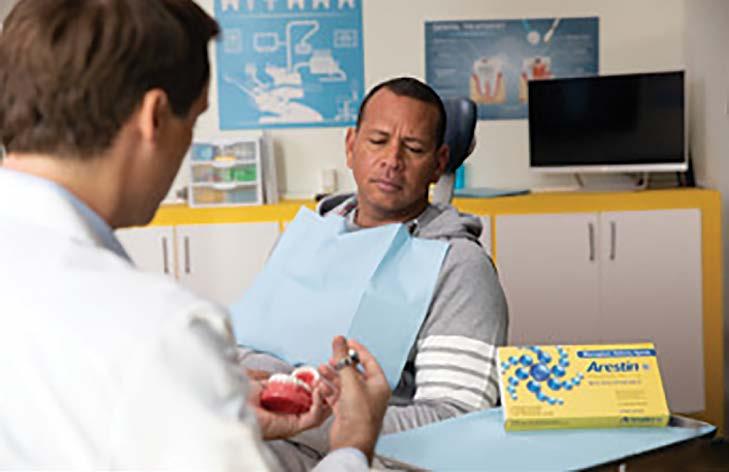

established brand facing down the next phase there’s always a why. And that’s where we start. We solve for why because that’s where inspiration lies. We approach every new relationship with equal parts strategy, purposeful creativity and unbridled enthusiasm because we love doing great work for good people.
Services: Brand Awareness & Thought Leadership, Lead Generation & Conversion, Reputation Management, Customer Connection and Engagement, Brand Communications, Digital Marketing, Social Media, Content Marketing, Website Development, Design, and Video Production.
5 Wood Hollow Road Parsippany, NJ 07054 973/588-2000 coynepr.com/industry/healthcare
501 7th Avenue New York, NY 10018 212/938-0166
Kelly Dencker, Executive Vice President, Director of Healthcare kdencker@coynepr.com
Kevin Lamb, Senior Vice President klamb@coynepr.com
Linda Bernstein Jasper, Senior Vice President lbjasper@coynepr.com
Erin Drelick, Senior Vice President edrelick@coynepr.com
There is nothing more precious in life than health. And there is perhaps nothing more personally rewarding than helping someone in need. Parents, caregivers, volunteers, medical professionals, researchers, advocates—they all share a common purpose: to help
World Series Champion, Alex Rodriguez, joined Coyne client OraPharma to launch the Cover Your Bases campaign—a national awareness initiative to help people understand the signs and symptoms of gum disease and encourage them to talk to their dentist about comprehensive treatment options. Continued on page 36

Continued from page 35
people. We embrace that purpose and believe we can make a difference by connecting people in need to a treatment, service, or solution that in some way helps improve their lives.
In partnership with our clients, we embrace the opportunity to change lives by guiding health journeys through information, insights, and inspiration. Data tells you what’s happening, stories tell you why it matters. Insights inform new conversations, frame new perspectives, and inspire people to think differently. Storytelling brings them to life through compelling narratives and inspirational tales of triumph that turn data and content into meaningful connections. That’s why we get up in the morning.
Because when it comes to health, everything else comes second.
705 Melvin Avenue Annapolis, MD 21401 410/626-0805 www.crosbymarketing.com
Raymond Crosby, President & CEO
Denise Aube, EVP, Healthcare Practice Leader
Suresh John, EVP, Digital Strategy & Analytics
Anna Zawislanski, EVP, Government Practice Leader
Pam Atkinson, EVP, Director of Connection Planning
Rob Schnapp, Executive Creative Director
For 50 years, Crosby has helped healthcare clients Inspire Actions That Matter™—actions that positively impact people’s lives and contribute to the greater good— while building their brands and business.
Crosby’s Healthcare Practice serves hospitals and health systems, health plans, physician groups, technology and service providers, seniors housing, health advocacy groups and federal government agencies.
Services include marketing research and planning, brand development, experience design, public relations, social media, partner and community mobilization, digital marketing and web development, multicultural outreach, PSAs, and behavior-change campaigns.
Clients include the Agency for Healthcare Research and Quali-

Crosby’s leadership team includes (L-R): Anna Zawislanski, EVP, Government Practice Leader; Pam Atkinson, EVP, Director of Connection Planning; David Butler, EVP, Multimedia Production; Denise Aube, EVP, Healthcare Practice Leader; Raymond Crosby, President & CEO; Amy Hitt, EVP, Director of Operations; Suresh John, EVP, Digital Strategy & Analytics; and Rob Schnapp, Executive Creative Director.
ty (AHRQ), Blue Cross and Blue Shield of Vermont, Centers for Disease Control and Prevention (CDC), U.S. Department of Health and Human Services (HHS), Health Resources and Services Administration (HRSA), Kaiser Permanente, OrganDonor.gov, Shriners Children’s, Substance Abuse and Mental Health Services Administration (SAMHSA), Telehealth.HHS.gov, and U.S. Preventive Services Task Force.
Crosby provides integrated advertising, public relations, social media, and digital marketing services through specialized practices in Healthcare, Government, Nonprofits & Causes, and Military & Veterans. The firm ranks #22 on O’Dwyer’s list of national communications firms, the region’s #1 Ad Agency and #1 PR Firm by the Baltimore Business Journal, and #10 on GrowthLab’s list of Top 100 firms serving the federal government. Crosby has also been named as a Top Workplace by the Washington Post for eight consecutive years. To learn more, visit crosbymarketing.com.
111 Congress Ave., Suite #500 Austin, TX 78701 512/537-1414 info@crosswindpr.com www.crosswindpr.com
Since 2008, Crosswind Media & Public Relations has helped healthcare leaders across the country stay at the forefront of conversations that matter. As a full-service communications and public relations agency, our experts bring decades of experience to brand enrichment, effective messaging and compel-


ling public dialogue. We use our innovative approach in public relations, traditional and digital media, research, brand enrichment and marketing to develop fully integrated and multi-channel campaigns that make a difference. We believe in fashioning purposeful and impactful conversations that build pathways to success for more people, more often.
2869 Historic Decatur Road San Diego, CA 92106 619/794-0114 ext. 700 info@crowepr.com www.crowepr.com
Anna Crowe, Founder and CEO
Crowe PR is an ROI-focused integrated public relations agency specializing in brand awareness and reputation management within the healthcare technology and consumer goods industries, including medical devices, genomics, B2B tech, wellness supplements and more.
Headquartered in San Diego, California with a second location
in New York City and staff around the country, Crowe PR implements strategic campaigns that are designed to generate business growth and strong ROI for its clients. Services include media relations, thought leadership, organic social media management, crisis communications, influencer marketing and content creation.
Crowe PR’s strategic approach, creative mindset and focus on positively impacting humanity has resulted in five PRSA Bernays awards, including recognition for marketing, media relations, executive communications and Public Relations Team of the Year. The company has also been named to Inc. Magazine’s esteemed list of the fastest-growing, privately owned companies in America for the past three years. For more information visit www.crowepr.com.
444 Bedford Road Suite 201 Pleasantville, NY 10570 914/747-2500 www.ddrpr.com
Dawn Dankner-Rosen, President Mackenzie Maher, Senior Account Executive Susan Nagib, Creative Services Director
DDR Public Relations, a full-service PR/Marketing firm founded in 1989, has created award-winning campaigns for healthcare clients for over 35 years. We have an impressive list of local, national and global clients, providing a host of public relations, marketing, branding, eMarketing and graphic art services as part of a full-service campaign or as specific services. We have earned awards for our effective Crisis Management campaigns and stand ready for our clients in case of a crisis to quickly lower the temperature and put out
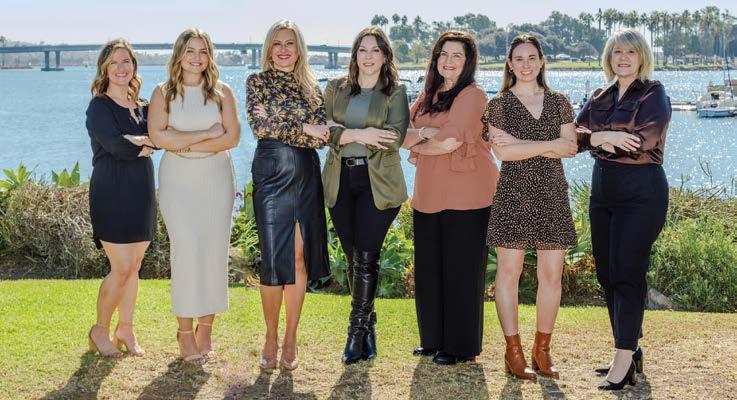
any fires.
DDRPR’s Healthcare Practice serves large and small medical groups, wellness and medical centers, hospitals, nursing and nurse placement services, individual physicians and physician groups, children’s hospitals and residential facilities, and seniors‚ homes and facilities. Our reputable team of public relations and marketing experts keep their finger on the pulse of healthcare, and have an extensive knowledge of physician, provider, influencers and patient needs.
We enjoy productive partnerships with our clients and consider our team to be an integral part of our client’s internal team. Many of our client relationships are longterm, the majority from 10 years up to 28 years!
Our team brings a combined nine decades of experience and a proven record of success in branding, messaging, crisis communications/ management, earned media/media placements, digital marketing, social media, graphic arts, content creation, email marketing, website design and website management, special events, and more.
Among our current and past healthcare clients and campaigns are WestMed Medical Group (Summit Health), Access Nursing, Greater NY Nursing, the Sunshine Children’s Home & Rehab Center, Pediatric Complex Care Association, Westchester Institute for Human Development, Hudson Valley Special Education Parent Center, Children’s Advocacy Center, NY Health & Wellness Center, myCareGPS.
250 Hudson St., 16th Floor New York, NY 10013
212/768-0550
Fax: 212/704-0117
www.edelman.com
Edelman is a global communications firm that partners with businesses and organizations to evolve, promote and protect their brands and reputations. Our 6,000 people in more than 60 offices deliver communications strategies that give our clients the confidence to lead and act with certainty, earning the trust of their stakeholders. Our honors include the Cannes Lions Grand Prix for PR; Advertising Age’s 2019 A-List; the Holmes Report’s 2018 Global Digital Agency of the Year; and, five times, Glassdoor’s Best Places to Work. Since our founding in 1952, we have remained an independent, family-run business. Edelman owns specialty
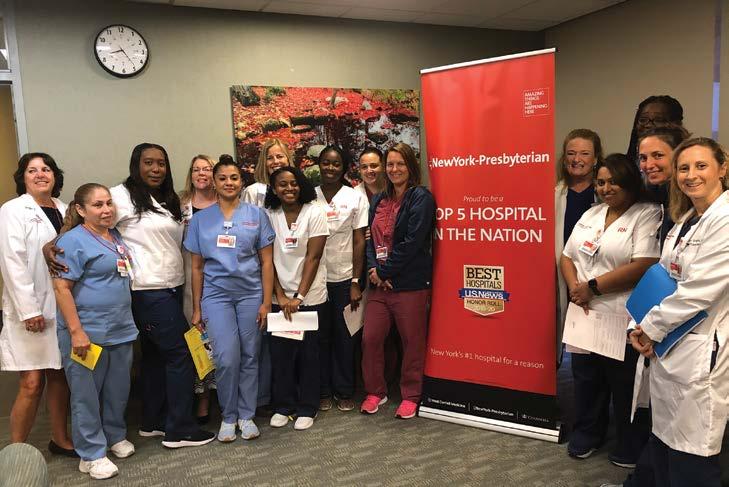
DDR Public Relations successfully launched client of 15 years, Access Nursing’s new Private Nursing Program at New York-Presbyterian Lawrence Hospital. An event at the hospital was one of the effective elements in our multichannel marketing campaign that focused on rebranding, brand identity and brand positioning.
companies Edelman Intelligence (research) and United Entertainment Group (entertainment, sports, lifestyle).
1675 Broadway New York, NY 10019
212/583-2791
www.finnpartners.com/sectors/ health.html
Instagram @FinnPartners
LinkedIn @FinnPartners
Fern Lazar, Managing Partner/ Global Health Practice Lead
Julie Adrian, Managing Partner/ UK Health Group Lead
Chantal Beaudry, Senior Partner / Clinical Trial Recruitment
Julian Tyndale-Biscoe, Senior Partner/UK Health Group
Jason Cao, Senior Partner / Head of Healthcare and Corp. Comm. FINN Partners China
David Carey, Senior Partner/Health

Investor Relations Lead
Mark Chataway, Managing Partner, Global Health Impact
Nicole Cottrill, Managing Partner/ Health Provider Services Lead
Beth Friedman, Senior Partner/ Atlanta Health Information Group Lead
Joe Foster, Partner/ West Coast Health Group
Richard Hatzfeld, Senior Partner/ Global Health Impact Lead
Michael Heinley, Senior Partner/ Account Services
Aman Gupta, Managing Partner/ Health Practice Asia Lead
Shivani Gupta, Managing Partner/ Culture & Brand Reputation Health Asia
Glenn Jasper, Managing Partner/ Jerusalem and Health Innovation Lead
Tom Jones, Managing Partner/ NY Health and US Biopharma Lead
Christopher Nial, Senior Partner, Global Health Impact
Ritesh Patel, Managing Partner/ Global Digital Health Lead
Diana Scott, Senior Partner NY

FINN Partners Global Health Lead in China, Jason Cao, Senior Partner, and team are championing the efforts of innovative biopharma companies seeking to distinguish their leadership from a sea of sameness when it comes to biomedical innovation and sustainability in one of the world’s largest health markets.
Health Deputy Lead
Mina Volovitch, Senior Partner/ Paris Health Group
Nate West, Partner/Southeast Health Group
Gil Bashe, Chair Global Health and Purpose
FINN Partners champions innovation across the health ecosystem. Our health clients include visionaries and game-changers from across the health industry, including top20 pharmaceutical companies, the nation’s largest hospitals and payer systems, and many of the world’s boldest companies in clinical advances, digital health, health information technology and medical devices. Ranked among the world’s largest independent health practices, The FINN Global Health Practice includes more than 300 colleagues dedicated to the health sector, spanning nearly 100 countries.
O’Dwyer’s ranks FINN among the leading health sector agencies. PRovoke and health-sector trade group HITMC named it “Healthcare Agency of the Year.” FINN delivers extraordinary service and value to every client through product communications, clinical-trial patient recruitment, digital marketing, investor relations, issues management, scientific publication support, thought-leadership strategy, and traditional and social media.
Across the health industry, FINN is recognized for its work in transforming people’s lives by championing health innovation. Whether introducing new medicines and technologies that improve and extend life, uniting patient communities through advocacy platforms, supporting breaking science or raising awareness of unmet health needs, and elevating the work of provider systems, FINN has become the leading partner in helping clients to make a difference.
112 East Hargett St. Raleigh, NC 27601 919/832-6300 www.fwv-us.com
Rick French, Chairman & CEO
David Gwyn, President / Principal Natalie Best, Chief Operating Officer / Principal
French/West/Vaughan (FWV) is the Southeast’s leading public relations, public affairs, advertising and digital media agency, a
_ Continued on page 38


Continued from page 37
distinction it has held since 2001. Headquartered in Raleigh, N.C., and founded in April 1997, FWV has received 35 Global or National Agency of the Year honors over the past 27 years. Its professional services practice area is ranked 12th in the country.
FWV’s category acumen includes private and clinical practices, research labs, health IT companies, laboratory and medical device manufacturers, drug development firms, weight loss centers, medical schools and large pharmaceutical manufacturers. The agency specializes in helping its healthcare clients increase brand awareness among key decision makers for their product lines and services through targeted media outreach, advocacy marketing campaigns, public affairs, special events, trade show support, emerging media applications and crisis communications.
FWV’s healthcare and medical marketing experience includes work done on behalf of: A4 Health Systems, American Addiction Centers, Amgen, Arrivo BioVentures, Avmacol, bioMérieux, Campbell University School of Osteopathic Medicine, Cardinal Health, Catalyst Clinical Research, CeNeRx, Eat Well, EpiPen, Ester-C, Flywheel, Foresight, GlaxoSmithKline, Isagenix, Istari Oncology, Locus Biosciences, MDeverywhere, Medcryption, New Hope Fertility Center, Nutramax Laboratories Consumer Care, Inc., O2 Fitness, Octapharma Plasma, One Medical, Ontex, Pfizer, Proctor & Gamble (Prilosec), Quest Diagnostics, Ride for Mental Health, Southtech, Sterling Healthcare, Structure House, TFS HealthScience, The V Foundation for Cancer Research, University of North Carolina Institute for Pharmacogenomics and Individualized Therapy, WakeMed and Wellspring.
In addition to its diverse range of healthcare and medical marketing clients, FWV’s passionate team of expert storytellers works with many of the world’s leading companies and brands, including Wrangler, ABB, Proximo, Melitta, Teen Cancer America and the N.C. Department of Transportation, just to name a few.
FWV is the parent company of fashion and lifestyle PR firm AMP3 (New York City); mobility and transportation-focused agency TMG (Detroit); pet and animal


health practice Fetching and feature film development imprint Prix Productions. FWV employs more than 140 public relations, public affairs, social media, advertising and digital marketing experts between its Raleigh, N.C., headquarters and offices around the country.
111 West 33rd Street, 22nd Floor New York, NY 10001 212/697-2600 www.gscommunications.com
Locations: New York, Chicago and Raleigh
Steve Halsey, Chief Growth Officer shalsey@gscommunications.com
Anne Green, CEO
Some view healthcare through a single lens. At G&S Business Communications, our lens is a prism.
We support a rainbow of players: physicians and patients, hospitals and health systems, providers and payers, technology platforms and healthcare services, system strategists and policy professionals working in every setting. This kaleidoscope of care drives our passion and impact.
We pair years of healthcare sector experience with critical knowledge gained across other industries like professional and financial services. This generates new avenues of insight to help our clients tell the right story, in the right way, to the right audience.
We are part of the G&S Integrated Marketing Communications Group, where media strategists, storytellers, marketers, analysts and creatives help engage audiences and inspire action, resulting in business growth.
Our clients are Fortune 500, mid-market companies and innovative start-ups that fuel transformation across six key industries. This includes: Advanced Manufacturing & Energy; Agribusiness; Financial
& Professional Services; Healthcare & Wellness; Home & Building; and, Landscaping & Outdoor Living. We offer a range of specialized services including: Strategy & Insights; Branding; Public Relations; Social Media; Marketing & Analytics; Content; Advertising; and, Web.
We are proudly independent and midsized. This keeps us nimble and able to provide the senior counsel our clients need. We are a hybrid operation with three main offices in Chicago, Raleigh, and our headquarters in New York City. As a decades-long partner in PROI Worldwide, we also offer our clients a global network of in-language and in-time zone support across 60 countries and 165 major cities including London, Hong Kong, Frankfurt, Rio de Janeiro and Tokyo.
Learn more at www.gscommunications.com.
600 Fifth Avenue, 2nd Floor New York, NY 10020
Contact: Maryellen Mooney, Senior Vice President 212/576-2700, x7225 or 631/704-6102 www.goodmanmedia.com
Tom Goodman, Founder, President & Chief Executive Officer
Marie Vogliano, Chief Financial Officer
Sabrina Strauss, Chief Operating Officer
Liane Ramirez Swierk, Executive Vice President
Maryellen Mooney, Senior Vice President
Edwige Buteau, Vice President
Goodman Media International (GMI) is a strategic communications agency with an outstanding record of successfully raising the visibility of its clients. For more than 25 years, GMI has helped elite clients stand out through integrated
campaigns that move the needle, drive business development, and exceed expectations.
GMI Health is Goodman Media’s health care practice that seamlessly bridges the gap between the evolving health care landscape and effective communications. With deep understanding of the intricate nuances within the industry, we design impactful communications campaigns, create targeted messaging, orchestrate advocacy initiatives, position thought leaders, and offer perspective on impactful regulatory developments and industry leadership trends.
Our clients have included: RWJBarnabas Health; Centers Health Care; ArchCare; Guthrie; Intermountain Health; Hospital for Special Surgery; Atrium Health; Sanford Health; Valley Health System; Spectrum Health; The Hebrew Home at Riverdale; Arthur Ashe Institute for Urban Health; Institute for Healthcare Improvement; Joe Torre Safe At Home Foundation; Lustgarten Foundation for Pancreatic Cancer Research; Mental Health Association of New York City; The Buoniconti Fund; Scope; Allergy Standards; U.S. News & World Report’s “Best Hospitals” rankings; and Columbia University Mailman School of Public Health. Reach out to us at health@goodmanmedia.com.
750 17th Street, NW, Suite 1200 Washington, D.C. 20006
202/842-3600
202/842-4032 www.hagersharp.com
Jennifer Wayman, MHS, President & CEO
At Hager Sharp, we have dedicated more than 50 years to cre-
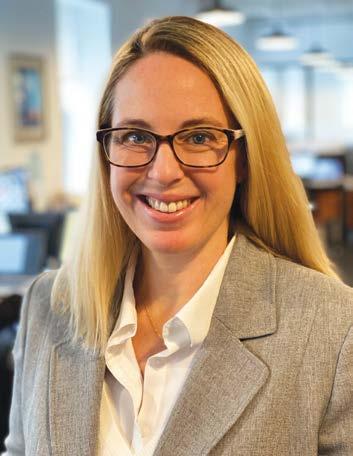
ating strategic communications and social marketing initiatives for organizations that are committed to fighting for equity in education, improving the health of people and communities, and empowering vulnerable populations. We are a full-service, integrated marketing and communications firm with deep expertise in public health, disease prevention, health promotion, and behavior change strategies. As an employee-owned small business, we have provided communications leadership across a wide range of health issues, including COVID-19, chronic and infectious diseases, cancer, vaccine promotion, genetic diseases, environmental health, women’s health, food safety and nutrition, and substance abuse prevention. Hager Sharp’s strategists, researchers, creative specialists, media experts, and public health professionals bring award-winning, research-driven, behavior-changing health communications services and social marketing campaigns to life. Our focus is, and always will be, working with mission-driven institutions, businesses, foundations, and nonprofits to create and execute ideas that make a difference.
One World Trade Center, Floor 68 New York, NY 10007
212/679-6600
Grace Leong, CEO
Gigi García Russo, Chief Innovation and Growth Officer
Melissa Rooney, Managing Director
Contact: smormar@hunterpr.com
Samara Farber Mormar, CMO

HUNTER is an award-winning consumer marketing communications firm ranked as a “Best Place to Work” and “Consumer Agency of the Year” with offices in New York, Los Angeles and London and partnerships that extend our reach globally. Beginning with research-driven insights, HUNTER executes strategic, integrated programs that build brand equity, increase engagement and drive measurable business results for OTC products and healthcare services. The 270+ person firm employs a powerful blend of marketing solutions including strategic planning, earned media relations, social and digital media, talent and influencer engagement, experiential marketing, multicultural outreach, and content creation and distribution across all platforms and channels to earn attention for some of the world’s best known and most beloved brands.
Today more than ever, consumers’ mindsets about overall wellness have shifted and they are focused on finding ways to prioritize their health. Our HUNTER: Health and Wellness team is on a mission to ensure that consumers find brands and products that help them live healthier, happier lives. By collaborating with experts, media properties, influential voices, and target-right partners, we ensure that brand messages get to the right audience in the places consumers are looking for wellness information.
In partnership with some of the most respected consumer health companies and retailers including KENVUE, Church & Dwight, Reckitt, New Chapter and Merck Animal Health, HUNTER’s work

To drive thought leadership for Merck Animal Health in a key market, HUNTER secured a sponsorship for an inaugural free pet wellness clinic in Nashville hosted by The Companion project and Brad Paisley & Kimberly Williams-Paisley’s non-profit, The Store. In addition to driving conversation around the health and wellbeing of companion animals, 100+ cats and dogs were examined by veterinarians on-site and provided important preventative care and medications needed courtesy of Merck Animal Health.

Sharp incorporates powerful digital storytelling as an effective communications tactic in support of CDC’s “Hear Her” campaign to prevent maternal mortality and raise awareness of urgent maternal warning signs among pregnant and postpartum people.
has covered the medicine cabinet from oral care, allergy, sanitary protection, pain and pregnancy, to digestive health, vitamins, supplements, weight-loss, heart health and COVID safety.
761 Main Avenue Norwalk, CT 06851 203/682-8200 Michael.Obrien@westwicke.com www.icrinc.com/healthcare
ICR Westwicke, the healthcare division of ICR, has established itself as one of the leading providers of integrated Public Relations, Investor Relations and related services for healthcare companies. ICR Westwicke’s healthcare practice works with more than 200 clients across life sciences, medical device/diagnostics, services and healthcare IT. With complementary services in digital branding, capital markets advisory, IPO advisory, crisis communication and corporate governance advisory, ICR Westwicke offers a full suite of strategic communications and advisory services for startups and mature public companies alike. In September 2023, ICR Westwicke acquired Consilium Strategic Communications, one of the preeminent healthcare communications firms in Europe. This provides our firm with the unrivaled ability to serve our healthcare clients’ communica-
tions needs on a global basis. Consilium’s clients extend across 13 countries in Europe and their team brings a complementary set of experience to the ICR Westwicke group. Whether the emphasis is on corporate, scientific and marketing communications, patient education and advocacy, preparing for an IPO or raising additional capital, we understand that every client is different, and so too, is their story. With an innate understanding of the many complex dynamics and influencers within the healthcare ecosystem and a clear lens on the financial impact of all communications, ICR Westwicke takes a hands-on approach to understand both the science and the sentiment behind your business, ensuring that your message goes beyond simple clarity to resonate and make a lasting impression with the audiences that matter most.
210 W. Pennsylvania Ave. Baltimore, MD 21204 410/821-8220
1701 Walnut St., 7th Fl. Philadelphia, PA 19103 267/214-6222
60 Broad St., #3600B New York, NY 10004 917/477-4800
Continued on page 40

Continued from page 39
Anna Kotis, President
Rob Naddelman, Chief Operating Officer
Christian Bauman, Chief Creative Officer
Scott Tucker, Chief Client Officer
Lorraine Hirsh, Chief People Officer
Imre is a brand engagement agency for healthcare and consumer clients that creates impact by helping brands connect authentically with people in the moments that matter.
Imre is a PE-backed, independent, fully integrated agency specializing in promotional and earned agency-of-record (AOR) work across health and consumer brands. Imre’s innovative approach spans healthcare, B2B and consumer targets and includes brand strategy, creative, omnichannel marketing, modern earned, media, and the latest in data and analytics. With deep digital, earned and social expertise, Imre authentically connects with audiences across channels to reach them at crucial decision-making moments.
Making connections is a personal undertaking. The firm continues to focus on disrupting the conventions of life sciences marketing with culturally attuned creators across the agency’s marketing team. Imre partners with a diversified and growing portfolio of consumer, life sciences and provider organizations. The agency maintains offices in Baltimore, New York and Philadelphia in addition to a growing group of employees who work from anywhere. Imre is an LGBTQ-founded company.
1101 Connecticut Ave, NW Suite 600
Washington, DC 20036
202/591-4000
carrie@jpa.com
www.jpa.com
X/Twitter: @JPAHealthComm
LinkedIn: @JPAHealthCommunications
Facebook: @JPAHealth
Instagram: @jpahealth
Carrie Jones, CEO
Chris Sousa, CFO
Colleen Carter, Head of Life Sciences
Adam Pawluk, Head of JPA Labs
Tish Van Dyke, Exec. VP, Purpose Practices
Claire Morse, Sr. VP, Human Resources
JPA Health is a full-service, fully integrated marketing and commu-


nications agency that is headquartered in Washington, DC, with offices in New York, Boston, greater Philadelphia and London. Igniting impact and transforming lives, our award-winning firm, renowned for its prowess in public relations, marketing, and advocacy, stands shoulder-to-shoulder with clients dedicated to the pursuit of a healthier world.
In May 2024, JPA Health announced the acquisition of BioCentric, Inc., an award-winning medical communications agency. The firm is recognized for its work with leading pharmaceutical companies, supporting them with scientific platforms for pipeline product candidates, clinical trial acceleration, and HCP engagement.
In July 2024, JPA announced the acquisition of London-based akt health, an award-winning communications agency recognized for its work in delivering excellence across public relations, medical education, and patient engagement programs.
Clients include: Alexion Pharmaceuticals, Alnylam Pharmaceuticals, America’s Poison Centers, American College of Obstetricians and Gynecologists, American Kidney Fund, AstraZeneca, Bayer, Biller Family Foundation, Centers for Disease Control and Prevention (CDC), Glaukos, GlaxoSmithKline, Johnson & Johnson, Kroger Health, LUNGevity Foundation, Merck, National Health Service UK, National Institutes of Health (NIH), RxBenefits, Sanofi, Society for Women’s Health Research, Substance Abuse and Mental
Health Services Administration (SAMHSA), and Takeda Pharmaceuticals.
20 Park Plaza, Suite 312 Boston, MA 02116 617/374-8800
hello@lavoiehealthscience.com wwww.lavoiehealthscience.com
Donna L. LaVoie, President & CEO
Ella Deych, SVP, Finance & COO Lisa DeScenza, SVP & Head of New Business
LaVoieHealthScience partners with health and science emerging and commercial organizations to advance their innovations. The complexity of the business of science, medicine, and technology requires leaders to create a unique voice in a highly regulated industry. We are a strategic communications and marketing firm with hubs in Boston and South Florida. We excel in messaging, positioning, investor relations, corporate communications, marketing, and public relations. As part of the health and science ecosystem, we stay ahead of the industry to skillfully guide clients in meeting tomorrow’s needs. Our purpose and value-driven approach seamlessly connects our clients with their target stakeholders including media, investors, advocacy, KOLs and more.
We are an award-winning agency having won over 60 public relations, marketing and investor

relations awards and are a member of the Inc. 5000’s fastest-growing private companies Hall of Fame. We are certified in healthcare communications compliance and serve commercial and pre-commercial clients both domestically and globally. Through our alliance with Omnicom Public Relations Group and IPREX, we bring our global clients a broader set of health and science teams offering over 3,000 health experts worldwide. We are committed to serving health and science clients offering broad domain experience in animal science, autoimmune diseases, CAR-T, cell and gene therapy, generational AI, diagnostics, CNS, CRISPR, immuno-oncology, lysosomal diseases, medtech, medical devices, neurodegeneration, oncology, ophthalmology, precision medicines, rare diseases, regenerative medicine, pharma/biotech services, industry organizations and governments. We’ve earned our clients’ trust with 23 years in our sector and have developed over 450 communications plans.
Serving healthcare brands nationwide 1800 W. 5th Ave. Columbus, OH 43212
614/932-9950
info@mediasourcetv.com www.mediasourcetv.com
Lisa Arledge Powell, Founder and CEO
Shannon McCormick, Principal and VP of Public Relations
Kevin Volz, Principal and Senior Vice President of Strategy
Tired of telling groundbreaking stories that your audience never sees? Results start with us. MediaSource is a certified women-owned health care communications agency that helps organizations meet business goals by combining storytelling with strategy. With a 25year history of elevating healthcare brands across the U.S., our team understands the realities of the healthcare industry with proven results that drive patients, recruitment, reputation and business.
That’s right; Campaigns that actually drive business to your healthcare organization! There’s a reason why we were named Best Healthcare Agency by Ragan Communications for an unprecedented four years in a row. We know health care. Our award-winning collection of veteran public relations experts, producers and strategic analysts have the expertise to take your projects to the next level. Working as true partners, our team is known to quickly align with internal teams for collaboration that moves the needle for respected organizations. You’ve probably seen many of our clients’ stories in the news, including work for The Ohio State University Wexner Medical Center, Nationwide Children’s Health, Orlando Health, National Jewish Health, El Camino Health, Northwell Health, Roswell Park Comprehensive Cancer Center and many more.
Let’s get to work discovering and creating stories that will help you reach your goals. To learn about our PR, thought leadership content, video storytelling and other specialties, visit mediasourcetv.com or reach out to the team here: info@ mediasourcetv.com.
8251 Greensboro Drive, Suite 600 McLean, VA 22102 703/390-1500 info@merrittgrp.com www.merrittgrp.com
Alisa Valudes Whyte, CEO, Senior Partner
Thomas Rice, EVP, Senior Partner and Healthcare Leader
Merritt Group is an award-winning, woman-led strategic communications agency with a dedicated focus on helping the world’s most innovative companies reach, engage, and convert B2B and B2G tech buyers. With locations in McLean, Virginia, Boston, New York City and North Texas, Merritt Group has a dedicated Healthcare Practice specializing in public relations, content creation, marketing
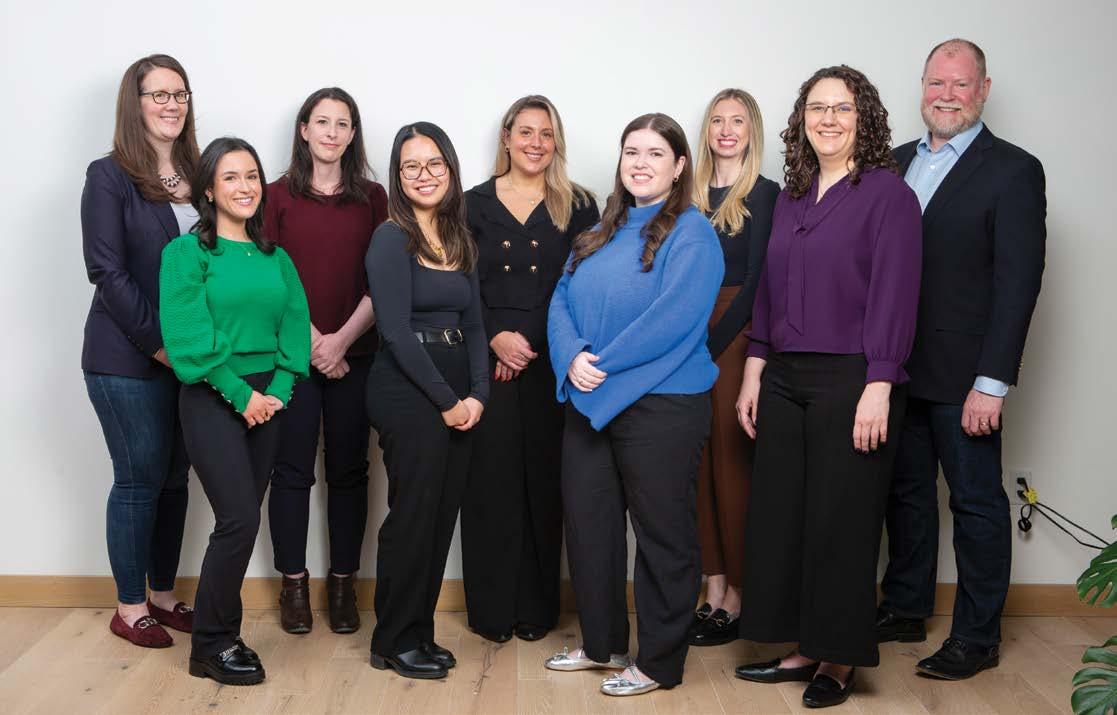
strategy, messaging, customer acquisition and nurture, websites and digital experiences, brand creation and design and more.
Our philosophy starts with intrinsically understanding our healthcare clients’ target audiences, which leads to the development of powerful messaging and creative PR programs that drive high impact awareness, engages audiences and accelerates sales around their innovations.
We help our healthcare clients achieve their goals and meet the needs of today’s patients, providers, physicians, insurers and influencers across a complex healthcare continuum. Our team deeply understands the transformative world of healthcare. With a more consumer-driven healthcare marketplace and constant changes to the healthcare policy landscape, Merritt Group can be your sentinel to navigate how to market to your core audiences.
For more than 18 years, we have worked with leading and emerging healthcare brands including RapidAI, Viedoc, Astrix, Ensemble Health Partners, Medisafe, Infermedica, GoHealth Urgent Care, Samsung Health, InnoCaption, Avizia, MedGenome, CardMedic, Emeritus Healthcare and more.
135 W. 50th St., 2nd Floor New York, NY 10020 415/384-8677
Mike Kuczkowski, CEO & Founder
Diana Dopfel, COO

Orangefiery combines strategy consulting rigor with real-world public relations expertise to help healthcare clients transform innovation into impact.
We partner with biotech and pharmaceutical companies, hospitals, health systems, and advocacy organizations to deliver insights, strategy, and communications execution. Our high-level business acumen ensures all work supports our clients’ specific objectives, whether we are working with leaders of communications, commercial, medical affairs or investor relations teams.
Our strategy consulting offerings include brand building, narrative development, market development, advocacy relations landscapes, and stakeholder engagement plans.
Communications and PR services span content and message development, product communications, executive thought leadership, disease awareness programs, and financial communications.
Serving global pharmaceutical leaders and emerging biotechs alike, we enhance reputations, expand market presence, and navigate complex stakeholder landscapes for established players. For growing companies, we build credibility, raise awareness, and position for commercial success.
Our suite of services for phase 2/3 biopharma and biotech companies preparing for commercialization includes developing and implementing sophisticated brands, websites, corporate presentations, and multi-stakeholder outreach
programs. We also provide risk preparedness and crisis management services, offering a structured approach to mitigate risks and prepare for the unexpected.
Refined through collaborations with industry giants like Pfizer, AstraZeneca, and Johnson & Johnson, our innovative consulting + communications model positions us not just as consultants, but as partners in achieving your goals.
1101 West River Parkway Suite 400 (Headquarters) Minneapolis, MN 55415
612/455-1700
PadillaCo.com
Jen Dobrzelecki, Senior Vice President, Health
Padilla is a full-service integrated agency transforming brands and organizations through strategically creative communications. Our omnichannel work across health, agriculture, technology, financial services and food, beverage and nutrition, is consistently recognized with industry honors such as PRWeek Awards, PRovoke SABRE/ IN2 SABRE Awards, and PRSA Anvil Awards, among others. Padilla operates in seven cities in the U.S. through its family of brands, which includes SHIFT (performance communications), FoodMinds (food and nutrition affairs),
_ Continued on page 42


Continued from page 41
and Joe Smith (brand strategy).
Health clients include Abbott, Blue Cross and Blue Shield of Minnesota, Hackensack Meridian Health, Lupus Foundation of America, Mayo Clinic, Medtronic, Myriad Genetics, National Committee for Quality Assurance, Sanofi, Thea Pharma and Valneva.
Padilla’s best-in-class Health team consists of highly experienced health, wellness, and science experts spanning the health care and patient ecosystem, specializing in:
• Pharma & biotech
• Medical devices
• Health tech & health IT
• Health care providers, hospital and health systems
• Consumer health & wellness
• Insurers, payer groups
• Nonprofits, associations, government
As an AVENIR GLOBAL company and a founding member of the Worldcom Public Relations Group, the agency provides services to clients through 155 offices worldwide. Transform with purpose at PadillaCo.com.
125 High St., 2nd Flr. Boston, MA 02110 617/502-4300 info@pancomm.com
Philip A. Nardone, President & CEO
Mark Nardone, Chief Marketing Officer
Elizabeth Famiglietti, Chief People and Culture Officer
Darlene Doyle, Chief Client Officer
Megan Kessler, Chief of Integrated Marketing & Strategy
Gary Torpey, Chief Financial Officer
Dan Martin, EVP, Healthcare Nia Evans, Managing Dir., UK
PAN is the brand-to-demand agency that empowers possibility for B2B tech and healthcare companies worldwide. Forged from PR, we are storytellers at heart with deep industry experience and a strategic, data-driven mindset. We move ideas across media, people to action, campaigns to results, and brands to the next stage of their journey. Our mix of dedicated senior leaders, creative makers, everyday superstars, and analytical minds turn data intelligence into key insights and outcomes.
Our industry legacy doesn’t stop us from pushing the limits. We are specialists in the art of telling brand

stories, and experts in the science of marketing and driving demand. Recognized as a 2x Tech Agency of the Year and recent Data-Driven Agency of the Year, we thrive at the forefront of disruption and help brands at all stages of growth navigate their most critical transformational moments.
Come see what’s possible.
Clients Include: Algolia, Amdocs, Apptio, Aurora Solar, Bitdefender, Brightside Health, Certara, CivicPlus, Clarify Health, Commure, Coupa, Hicuity Health, iCIMS, Innova, LeanTaaS, Loyal Health, Magnit, OM1, Powin, Salucro Healthcare Solutions, Seismic, Shield Health Solutions, Smarsh, Thales, ThreatX, Toshiba/Americas, UPS Capital and Vercara.
Headquartered in Boston, MA 75 State Street, Suite 100 Boston, MA 02109 617/624-3200
agencymarketing@racepointglobal. com www.racepointglobal.com
Larry Weber, Founder & Chairman
Bob Osmond, President
Phil Chadwick, Chief Financial Officer
Carolyn Regan, Chief People Officer
Ben Haber, Executive Vice President, Client Services
Technology propels society forward. Every company in every category uses technology in some way to change the way we work, live, and play. And there is a growing expectation that innovation, including healthcare technology, must serve humanity. At RPG, our mission is clear: We help tech-forward brands navigate and succeed in the new communications landscape by shaping the conversations that matter. We serve our clients with multi-channel communications strategies that influence, engage, and reach their target audiences in authentic ways. To learn more about how we can help you shape conversations that matter, visit racepointglobal.com.
1111 3rd Ave., Ste. 1810 Seattle, WA 98101
206/264-2400
1301 K St. NW., Ste. 220W
Washington, D.C. 20005 202/379-0545 rhstrategic.com
John Raffetto, CEO
David Herman, President
Danielle Ruckert, VP, Healthcare Practice Lead
John Raffetto and David Herman founded Raffetto Herman Strategic Communications (RH Strategic) in 2008 with the belief that tying great work to business objectives drives results and transforms innovative companies into industry leaders. We pride ourselves on elevating the stories of next-generation innovators—the visionaries, game-changing brands and hands-on architects of a better future. We deliver creative, integrated communications across the technology, healthcare, sustainability, and government sectors—and, importantly, the powerful intersections between them.
As the forces of change in healthcare drive innovation, RH Strategic has elevated the voices of visionary leaders and transformative brands through strategic communications. Our healthcare practice mirrors the healthcare landscape itself, spanning Fortune 100 players to Series A disrupters, including providers, insurers, health IT innovators, life sciences, educators, advocates, and digital health platforms.
Our approach is based on a deep understanding of our clients, our up-to-the-minute vertical expertise and our ability to articulate and amplify stories that build brands and thought leaders. We design award-winning strategies that introduce, inform, influence and inspire. We execute those plans with a commitment to precision and adaptability. We work smart and hard.
RH Strategic is more than the sum of its parts. We are our people, our clients and our relationships— collectively focused on ensuring tomorrow is better (and healthier) than today.
1300 19th St., NW, Suite 600 Washington, D.C. 20036 info@TheReisGroup.com www.TheReisGroup.com
Sharon
Reis, Principal
Lauren Musiol, Kathleen Petty, Senior Vice Presidents
The Reis Group is an award-winning, highly specialized, full-service health care public relations agency and a woman-owned busi-

ness.
Our health care public relations campaigns increase awareness, promote healthy behaviors and bolster reputations. We represent leading associations, hospitals and health systems, payers, research institutes, foundations, medical societies, corporations, universities, and advocacy organizations. We are passionate about working on meaningful issues and making a difference, and we’ve earned industry recognition for our team and our campaigns.
Clients Include: American Gastroenterological Assn., Banner Alzheimer’s Institute, Blue Shield of California Foundation, Digestive Disease Week, George Washington University, Office of The National Coordinator for Health Information Technology, Nemours Children’s Health System, Society for Healthcare Epidemiology of America, Society of Interventional Radiology and World Vaccine Congress.
425 E. 53rd St. New York, NY 10022 212/593-6400 Fax: 212/593-6397 info@ruderfinn.com www.ruderfinn.com Facebook.com/ruderfinn Linkedin.com/company/ruder-finn Instagram.com/RuderFinn
Kathy Bloomgarden, Chief Executive Officer
Peggy Walsh, Chief Operating Officer
Michael Schubert, Chief Innovation Officer
Ian Glover, Chief Financial Officer
Tejas Totade, Chief Technology
Officer and Head of RF TechLab
Christie Anbar, Head of

Healthcare
Chris Montemurro, EVP, Healthcare
Leah Peyton, Co-Head of Healthcare, Ruder Finn UK
Sarah Brennan, Co-Head of Healthcare, Ruder Finn UK
Kate Hardin, EVP, Corporate Healthcare
Monica Marshall, Head of D.C and RF Relate, Crisis and Social Impact
Maryam Ayromlou, EVP, Media Strategy & Content
As an independent, global integrated marketing and communications agency Ruder Finn (ranked #5 in O’Dwyer’s Healthcare Ranking) helps clients anticipate, shape, and drive what’s next. We are renowned for our healthcare expertise and ability to help solve important business challenges and bolster client leadership in today’s dynamic,

complex, and sometimes fractured world. We have the honor of partnering with some of the world’s most innovative biopharma, med tech, life sciences, and consumer health companies.
Our Healthcare practice is dedicated to creating meaningful change. We shape markets, shift opinions, influence policy and drive behavior by connecting today’s digital-first world with tomorrow’s breakthrough science and cutting-edge technology. We excel at making complex science simple and relevant, and digital health solutions personal and engaging. Our expertise lies in crafting powerful stories and utilizing a strategic omnichannel approach to ensure they are heard by the right audiences.
We deliver transformative results


for corporate and product brands by offering the full range of integrated marketing and communications services that are built upon insights and analytics, breakthrough creative and proven stakeholder engagement strategies.
Through broad and targeted programs across the healthcare ecosystem, we build corporate value, empower patients and healthcare providers to improve outcomes and enable clients to deliver what’s next
548 Market St., Suite #44541 San Francisco, CA 94105 775/813-0285 chris.hempel@sparkpr.com donna.burke@sparkpr.com sparkpr.com
Donna Burke, Chris Hempel, CoFounders Ellen Edelman, Amy Packard Berry, Executive Vice Presidents Cameron McPherson, Chief Financial and Operating Officer
Celebrating 25 years of excellence in 2024, Sparkpr continues to drive innovation in healthcare, biotech, technology, and AI communications. Since 1999, we’ve evolved into a premier global agency, delivering unparalleled PR, digital marketing, social media, content creation, and strategic communications services.
Our healthcare and biotech practice group is spearheaded by co-founder Chris Hempel, who brings a truly unique perspective to the PR industry—that of a communications professional who has developed an FDA-approved drug.
Sparkpr Co-Founder Chris Hempel, who also leads the agency’s Healthcare and Biotech Practice Group.
Chris’s pioneering work in rare disease advocacy, including creating a breakthrough drug treatment for her children, has garnered global media attention. This unparalleled experience empowers our healthcare team to navigate complex medical landscapes, distinguishing Sparkpr in crafting compelling narratives and achieving excellent results for our healthcare clients.
Leveraging a network of over 50 professionals across key U.S. hubs including Austin, Boston, Los Angeles, New York, San Diego and San Francisco, we empower innovators across diverse sectors. Our global reach enables us to deliver tailored, high-impact programs to every client, from disruptive startups to Fortune 1000 leaders.
Sparkpr’s excellence is consistently recognized by Newsweek and Forbes, ranking us among America’s Best PR Agencies. Our proven track record of transforming brands makes us the partner of choice for forward-thinking companies in healthcare and beyond.
Chrysler Building 405 Lexington Ave., Floor 8 New York, NY 10174
Contact Info: inquiries@ theswayeffect.com www.theswayeffect.com
Jennifer Risi, Founder and President
The Sway Effect is an award-winning global network of independent marketing and communica-

Continued from page 43
tions agencies. Headquartered in New York City, our network is made up of over 50+ agencies in North America, Europe, Latina America, and Asia-Pacific. At the heart of our work, we are focused on “swaying” opinion on behalf of our clients and putting diversity, equity, and inclusion, at the heart of everything that we do. Specifically, our team has deep PR expertise and specializes in corporate communications, global media relations, investor relations and issues management. Our team specializes in healthcare PR and current clients include BD [Becton, Dickinson and Company], 10X Genomics, to name a few.
Notably, earlier this year, our team supported the FDA approval of BD’s Onclarity™ HPV Assay for use with self-collected vaginal specimens in a healthcare setting. This is a major break for women’s health in the U.S. and the team secured notable press coverage in the likes of USAToday, Washington Post, CNN, and ABC News and more.
The agency has been awarded most recently:
• PRovoke Media 2024 North American Boutique Agency of the Year
• PRovoke Media 2024 North American Capital Markets Campaign of the Year
• PRovoke Media 2024 North American Diamond Award Winner —Superior Achievement in Reputation Management
• PRNews 2024 Agency Elite Top 100
• PRNews 2023 Women Owned Agency of the Year
129 South Street Boston, MA 02111 617/918-7060
209 W. Jackson Blvd. Chicago, IL 60606
708/421-0083
www.tieronepr.com
Marian Hughes, Co-Founder, Managing Partner—Chicago
Kathy Wilson, Co-Founder, Managing Partner—Boston
Tier One Partners is an award-winning integrated marketing agency. We offer a comprehensive range of PR, content, and


digital services to propel B2B and B2C companies in digital health (including helping these clients influence payer, provider, and supplier audiences), AI and other disruptive technologies, financial services, and energy tech into category leaders.
Our integrated approach ensures all aspects of a client’s marketing strategy work in harmony, positioning us as a valuable, long-term partner for healthcare brands seeking sector leadership.
Our Content Studio serves as a one-stop shop for content and digital needs. Our talented team comprises copywriters, editors, digital marketers, and graphic and UX/UI designers who collaborate to help clients think and act like powerhouse publishers and lead generators.
Our differentiator is that we keep our clients one step ahead. Our Agile Insights & Analytics practice uses proprietary methodologies and advanced listening tools to predict emerging business and cultural trends. Armed with these insights, we help healthcare clients cut through noise, connect dots, and share meaningful viewpoints that resonate with target audiences and build thought leadership.
In an industry where churn is common, Tier One prides itself on the longevity of our client relationships, with some partnerships spanning over a decade. This endurance testifies to our creativity, results, and passion we bring to every client engagement.
Co-headquartered in Boston and Chicago, we’re a certified women-owned business. We’ve
successfully built awareness and category domination for various digital healthcare leaders, including GHX, Reveleer, Level Ex, Omada, Virgin Pulse, Mightier, GI Supply, and Hospital IQ, among others. We tell these companies’ stories through trusted media relationships with top healthcare press including Axios, Modern Healthcare, Becker’s Hospital Review, FierceHealthcare, Healthcare Brew, Healthcare DIVE, the New York Times, the Wall Street Journal and more.
1042 Northside Drive, Suite 960 Atlanta, GA 30318 404/214-0722 X106 and X105 dtrevelino@trevelinokeller.com gkeller@trevelinokeller.com www.trevelinokeller.com
Ranked #1 in Healthcare in Atlanta, Trevelino/Keller continues to see its healthcare practice rank as one of its highest performing nationally. Its long-standing base of experience with the CDC, United Healthcare and emerging brands like Valer and Corista, coupled with one of the country’s deepest technology practices and Atlanta’s leading lifestyle practice, has advanced its health work across Health IT, biotech and wellness. The world’s pandemic crisis shined a spotlight on firms with extensive disease-related work and Trevelino/Keller became Georgia’s go to firm, representing Georgia’s COVID-19 Health Initiative on both COVID-19 awareness programs that would eventually

transition to COVID-19 vaccine programs. This important work, coupled with a base of experience with Ebola, Zika and other health crises, has made the firm one of the country’s established health firms.
Some other highlights of recent engagements include groundbreaking work in the cancer treatment segment with SpeciCare, a first mover in Live Tissue ScienceTM, 360 reputation marketing for SOC Telemed, as well as the launch of Mossa’s Movement Health initiative to address both the sedentary market and health club crisis through virtual, accessible programming. Its growing base of work in healthy eating and nutrition with clients like unMEAT and its launch of plantbased products, as well as Qunol Turmeric Supplements, indicate an increased demand for the agency’s predisposition to healthier brands. While the firm’s public relations discipline continues to grow, it’s seeing greater demand for its Growth Marketing and Creative Studios disciplines.
In 2024, the firm acquired Marsden Marketing, one of the 30 best growth marketing firms in the US as part of its Growth PR+Mkt strategy. And the agency continues to own the industry’s number one retention rate, having lost two staffers to agencies in 21 years. It credits its retention, in part, to progressive, culture-rich programs like Niners, Cooleaf, Read to Lead and staff favorite, Wild Blue Yonder, a curated travel getaway for staff awarded multiple times a year. For more information, visit trevelinokeller.com.


By Fraser Seitel
Ironically, a second unsuccessful attempt to assassinate Donald Trump could afford him one last opportunity to alter the public relations calculus and help the former President win reelection.

Granted, in light of Mr. Trump’s unwillingness to listen to others—his initial response to blame Biden/Harris rhetoric for the gunman was all wrong—the possibility of convincing him to change his vindictive tune is slim. But with empathy back on his side after enduring yet another close call with death, it’s once again within his power to expose a more mature, thoughtful and well-meaning side that could carry him to victory.
With the presidential sweepstakes in its home stretch, the big surprise is that Kamala Harris has become the front-runner. “Surprise” because a month ago, VP Harris was an afterthought, unloved by Democrats and considered a mediocrity by Republicans who pointed to her undistinguished 30-year political career, with few notable achievements, lots of office turnover and little charisma as a speaker or leader.
So, how could Ms. Harris so quickly reverse public opinion and stand on the cusp of becoming the next President of the United States?
For one thing, she’s listened assiduously to her public relations advisors. She no longer cackles or swings her arms around wildly at the podium. She keeps her answers to questions and statements in speeches short, rather than getting preachy or philosophical or long-winded. And she good-naturedly dismisses her opponent’s bluster, refusing to take seriously his persistent threats, accusations and name-calling.
That’s why, with less than two months left, she’s winning, principally because—as she demonstrated in the ABC debate—she has let Trump be Trump. And “Trump as Trump” is getting old.
Consider his rallies, his debates and his post-debate appearances. He’s bitter, frus-

trated and self-pitying. And this public posture, accelerated by an irrefutably anti-Trump media, will only hurt his chances of convincing the fence-sitters to vote for him.
Indeed, the only reason this election is at issue at all is that there are still thousands of voters in six or seven swing states that haven’t made up their minds. That’s it. Convince these uncommitted independents and you’ll be the next President.
So, as much he resists it, the only way to convince these presumably more thoughtful voters, who are uncertain about Harris but wary of Trump, is to embrace a public relations strategy that represses the rancor and contempt that have formed the basis of Democrat arguments against him and emphasizes the clear and precise—not to mention mostly true—distinctions between his opponent and himself on the several issues that matter ... with simple talking points like these.
The economy
• I am pro-business; she is not.
• Her Justice Department and Federal Trade Commission, in the name of “equity,” have tried to dismantle America’s greatest companies—from Apple and Google to Meta and Microsoft—that provide tens of thousands of jobs and fairly-priced products.
• My administration oversaw inflation at two percent, unemployment at historic lows and six million jobs added to the economy.
• I’ve spent my life building businesses and making workers more successful. She has no experience building anything.
Immigration
• I favor secure borders and legal immigration. Her record is one of open borders and unfettered entry into our country by undocumented immigrants.
• She has supported sanctuary cities—like New York, San Francisco, Chicago and Los Angeles—that have had to pay millions in taxpayer money to feed and house huge numbers of southern-border immigrants and have been afflicted by criminal activity from undocumented migrants with no place to go and nothing to do.
• My administration secured the southern border by tightening immigration laws and will restore sanity to immigration if reelected.
policy
• I ask for mutual respect and fairness from our allies and deal from strength with our adversaries. Her policy is one of accommodation and weakness.
• Her record has been marked by a di-
sastrous withdrawal from Afghanistan and continuing involvement in lingering conflicts in Ukraine and Israel, which has cost U.S. taxpayers nearly $100 billion.
• She would continue to be passive in these conflicts and with our adversaries. These wars would continue. My commitment is to end these wars, in the best interests of the United States and its allies.
• I believe schools should provide a safe and secure environment for traditional learning. She believes schools should be hotbeds for social and political indoctrination.
• I believe in greater school choice and a greater say for parents and communities in the school life of their children. She believes in a stronger federal role in education and confidentiality between schools and students that would subordinate the involvement or even knowledge of parents in personal matters such as gender preference.
• My emphasis in education favors the more traditional learning environment that prepares students to become successful individuals and good citizens. Her emphasis favors more political, progressive issues, such as gender and race.
Will Trump finally decide to ditch the venom and follow such a public relations course that lays out the stark differences between the two candidates? Probably not.
This is why the uncommitted voters of Arizona, Georgia, Michigan, Nevada, Pennsylvania, North Carolina and Wisconsin may well decide that a President Harris, untried and unknown as she might be, is still the safer choice.
Burson has launched Decipher Health, a cognitive AI offering designed to optimize communications impact and stakeholder engagement across patient, advocate, healthcare provider, health decision makers and analyst communities.
The third AI offering of its kind from Burson, it is part of PR Studio in WPP Open, WPP’s AI-powered marketing operating system. Created in partnership with cognitive AI company Limbik, Decipher Health by Burson has trained cognitive AI models on a broad spectrum of disease areas to create a robust framework for forecasting the potential impact of different types of content across healthcare-focused audience segments—based on observable, repeatable data. It makes predictions about communications impact by determining an audience’s level of commitment to a particular topic and the believability of online content related to that topic.
Decipher Health will be made available to all WPP healthcare clients.
X, the social media platform formerly known as Twitter, has brought on former Hyundai Chief Marketing Officer Angela Zepeda as its Global Head of Marketing.
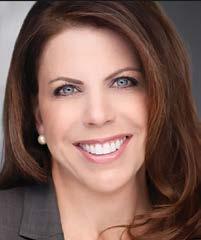
Zepeda is the first person to hold that post since Elon Musk took over the company. She left Hyundai shortly after it split its marketing department into creative and performance divisions and eliminated the Chief Marketing Officer role.
Zepeda has also served as SVP, Managing Director at INNOCEAN USA and President, CMO at Lowe Campbell Ewald. “Angela brings incredible experience and expertise, understands how to grow a brand globally and is exactly the right person to lead X’s marketing as we accelerate our innovation, said X CEO Linda Yaccarino.
Emily Lenzner, who did a fiveyear stint as executive VP-Global Communications at the Motion Picture Association, has signed on as Senior Advisor at Trident DMG.
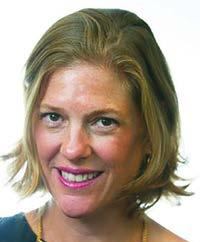
She is to handle special projects for the Washington-based strategic communications shop.
Before joining the MPA, Lenzner served as Senior VP-communications for Atlantic Media, working closely with its publications including The Atlantic, Quartz, National Journal and Government Executive Media Group. She served as Spokesperson for the acquisition of The Atlantic by Emerson Collective and of Quartz by Uzabase.
Lenzner also was Managing Director at SKDKnickerbocker; Executive Director, Communications at ABC News; Director, Communications & Media Relations at NPR; and Assistant to White House Communications Director George Stephanopoulos during the Clinton administration.
During the past decade, Lenzner has been Spokesperson and Media Advisor to
families of U.S. hostages held overseas, and serves on the advisory boards of HostageUS, Foley Foundation, and Global Reach.
Josh Galper, Trident DMG co-Founder, said Lenzner’s more than 20 years of experience counseling entertainment, media companies and NGOs will help his firm’s clients build value and navigate risks.
The Washington Post has hired Liza Pluto as Director of Communications.

Pluto comes to the Post from pet-care, snacking and food company Mars, Inc., where she served as Media Relations and Issues Manager on the company’s global external communications team. She was previously Media Relations Manager at MSNBC, Senior Publicity Manager at PBS and PR manager at CNN.
Finn Partners has named Julie Adrian Managing Partner and UK Health Group Lead, a newly created post, as the independent firm strengthens its global healthcare capabilities.

Adrian, who has more than 25 years of experience, worked as Global Chief Experience Officer at Real Chemistry, President Europe Communications at Syneos Health, President Europe communications at Inventiv Health, and Managing Director at Chandler Chicco Agency.
She joins Finn Partners from Alverium Health, where Adrian was CEO and Co-Founder.
The addition of Adrian bolsters the UK health unit’s effort to build a comprehensive suite of services including PR, IR, patient advocacy, digital marketing, scientific & medical communications support, and thought leadership.
Adrian reports to Gil Bashe, Chair of Global Health and Purpose. She will work closely with Fern Lazar, Managing Partner
& Global Health Practice Lead, and Chantal Bowman-Boyles, Managing Parter of the EMEA region.
Finn Partners ranks as O’Dwyer’s No. 8 healthcare firm with 2023 fees of $52 million.
Jennifer Kettnich, who was VP-Investor Relations at Walt Disney Co., has moved to the same position at Mattel.
At Disney, she was primary intermediary between it and the financial community.
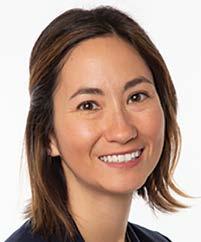
Kettnich also worked with internal stakeholders and the company’s board of directors to develop and articulate messaging on strategic and financial objectives.
In her new post, she is responsible for leading Mattel’s IR function, engaging with investors and analysts and communicating the company’s value proposition, investment thesis, financial performance and long-term strategy.
Kettnich reports to Chief Financial Officer Anthony DiSilvestro.
Mattel reported a one percent Q2 dip in revenues to $1.1 billion. Operating income rose 5.8 percent to $83.2 million.
Mohamed Younis,
at Gallup in charge of its U.S. polling, has joined Brunswick Group as Partner & Global Head of Insight.
He will oversee Brunswick’s public opinion, market research and analytics function.
Editor-of-Chief
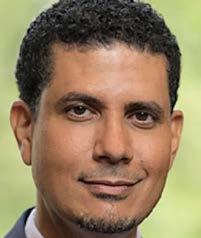
Prior to becoming Gallup’s e-i-c in 2018, Younis was Managing Editor of its news team. His research focused on geopolitics, U.S. foreign policy, youth unemployment challenges, and the relationship between Muslim communities and Western societies.
Fluent in Arabic, Younis has studied and worked in Saudi Arabia, Egypt and Qatar.


Trump-connected Ballard Partners has agreed to represent Chinese video app TikTok.
President Joe Biden signed a bill into law on April 24 requiring TikTok owner, Bytedance, to divest the video app within a year, or face a ban in the U.S.
The move follows Congressional concerns over Bytedance’s close ties with the Chinese Communist Party, and the potential of TikTok to hoover up the data of American users.
Donald Trump, who championed TikTok’s split from Bytedance, now opposes the divestiture because he claims it would benefit Facebook, which he calls “the enemy of the people.”
His flip-flop also may have been influenced by news that the investment firm of billionaire Jeff Yass, a Republican mega-donor, owns a 15 percent stake in Bytedance.
Brian Ballard, a top Trump fundraiser in Florida, heads his firm’s TikTok team.
Dan McFaul, Aide to Florida Congressmen Joe Scarborough and Matt Gaetz; Michael LaRosa, Advisor to Speaker Nancy Pelosi; and Stephen Klopp, Deputy Assistant Sergeant at arms at the Senate, round out the Ballard TikTok squad.
Pro-Palestinian activists protested at APCO’s London office on Sept. 3 for its work on behalf of Israel’s Elbit Systems, a weapons manufacturer.
They urged APCO to drop Elbit, which has a two-year contract to support ammunition to Israel’s Ministry of Defense, as a client, according to an exclusive report in the Semafor Gulf news site.
A group called Palestine Action wants APCO to cut lobbying ties with Elbit Systems UK “at a time when Elbit is playing a central role in the genocide in Gaza.”
Semafor reported that APCO employees in London and its Gulf offices in Abu Dhabi, Dubai, Riyadh and Manama are concerned about their safety in the aftermath of the protest.
They have expressed their concerns with APCO management about the relationship with Elbit.
APCO issued a statement, noting that intense feelings and robust discussions emerge in the firm when complex geopolitical issues emerge. “This open and respectful internal discussion is how we come together and become a stronger company,” it said.
The D.C.-based company has operated in the Gulf region since 2006.
Edelman Global Advisory has hired former South Carolina Governor and United Nations Ambassador Nikki Haley as a parttime Vice Chair.
In announcing the hire, Richard Edelman said politics is now a crucial consideration for clients in brand marketing, employee engagement and reputation management.
He said Haley was successful in attracting foreign companies to South Carolina and worked on major global issues while in the UN.

Institute think tank in April as Walter P. Stern Chair.
She addressed the Ketagalan Forum last month in Taipei and spoke about the need for a free trade agreement between the U.S. and Taiwan.
Justin McCarthy, who was Senior Advisor at Akin Gump, has joined DGA Group as a Partner in its U.S. government relations practice.
He is a veteran of the George W. Bush administration, serving as Special Assistant to the President for Legislative Affairs.
As Bush’s liaison to Congress, McCarthy helped shape strategies dealing with the Troubled Asset Relief Program (TARP) and Farm Bill, as well as free trade pacts with Panama, Korea and Colombia.
Prior to joining the White House, McCarthy was appointed by Bush as Assistant U.S. Trade Rep for Congressional Affairs.
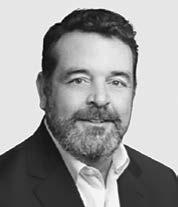
McCarthy also worked at Pfizer as Director of Government Relations, focused on healthcare, intellectual property, tax and international trade matters.
Avoq has added Joe Orlando and Kelly Montgomery to its government relations and PR teams.
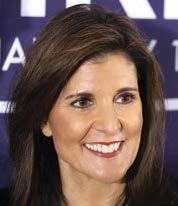
Nikki Haley
Haley, who mounted a spirited race for the Re- publican presidential nomination against Donald Trump, joined The Hudson

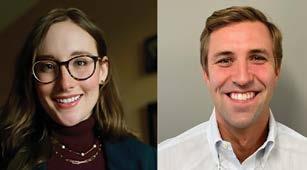
Orlando, who takes the VP title, has served as a Policy Advisor in a six-year run on the House Energy & Commerce Committee, and professional staff member on the Innovation, Data & Commerce Subcommittee dealing with consumer protection, data privacy and AI issues.
Steve Elmendorf, Avoq Partner, said Orlando will counsel clients as they navigate the increasingly critical areas of technology, competition and energy policy.
Montgomery is returning to Avoq (then Subject Matter) as Account Leadership Director after working as Communications Manager at the National Restaurant Assn., and Press Secretary for Congressman Dale Kildee, who is a member of the Democratic leadership.
GRV Strategies has inked a one-year $960,000 pact to provide media, PR and communications strategy services to Qatar’s international media office.
The Alexandria, VA-based firm will highlight the role that the Gulf state plays in international relations and look for opportunities for positive messages through the U.S. media.
The Qataris are crucial mediators in the cease fire negotiations between Hamas and Israel to end the Gaza war. Those discussions are held in Qatar’s capital city of Doha.
Grant Ventry is Founder/President of GRV. He was Chief of Staff to Colorado Congressman Ken Buck, and a Senior Advisor to New York Rep. and Republican Conference Chair Elise Stefanik.
The New Yorker credited Ventry for helping to direct the strategy to steer Brett Kavanaugh’s Supreme Court nomination. He also handled media relations for Supreme Court Justice Neil Gorsuch’s New York Times best-selling book, A Republic, If You Can Keep It.
Ventry and Brian Colas, who was a Staffer to Arkansas Sen. Tom Cotton, launched the Washington Reporter site in June to cover right-of-center news and commentary.
The kick-off issue featured an interview with House Speaker Mike Johnson.
Ballard Partners expands its Ballard Global Alliance through a strategic partnership with the GR Company in the Republic of Korea. Meant to give Ballard Partners a footprint in Seoul, the Ballard-GR Company Korea Partnership will also bolster the GR Company’s presence in D.C. It will also allow both firms to provide a comprehensive suite of government relations services in both Korea and the US, including legislative advocacy, regulatory affairs, public affairs, crisis management and international market
FARA News
access.
“This partnership will empower our clients to leverage the combined expertise and influence of two leading lobbying firms, opening new opportunities in Korea and the U.S.,” said Ballard Partners President and Founder Brian Ballard. Ballard Partners intends to continue expanding the BGA through strategic partnerships with leading firms in other key markets.
The United Arab Emirates spent $2.6 million at FGS Global, which was more than 70 percent of the payments received from foreign clients, during the six-month period ended July 31.
FGS worked on behalf of the UAE’s D.C. Embassy and United Nations Mission, according to the firm’s Justice Dept. filing. The firm did not report any fees from the Mission. It received $492,000 during six-month period ended Jan. 31.
For the Embassy, FGS provided PR and communications counsel to help create a public diplomacy program. It also scheduled meetings and briefings for staff with business people, academics, public policy groups and reporters.
For the Mission, the firm undertook assignments related to specific public affairs matters.
FGS handled issues related to aid to Gaza, conflict in the Red Sea, defense cooperation with the US, overall US/UAE relationship, partnership with the NYC Parks Dept., AI initiatives and meetings with UAE officials
The PR firm contacted representatives from the Wall Street Journal, Financial Times, New York Times, Washington Post, ABC, NBC, NPR, Bloomberg, Semafor, Reuters and Axios.
Below is a list of select companies that have registered with the U.S. Department of Justice, FARA Registration Unit, Washington, D.C., in order to comply with the Foreign Agents Registration Act of 1938, regarding their consulting and communications work on behalf of foreign principals, including governments, political parties, organizations, and individuals. For a complete list of filings, visit www.fara.gov.
BGR Government Affairs, LLC, Washington, D.C., registered Sept. 13, 2004 for People’s Democratic Republic of Algeria, Embassy of Algeria, Washington, D.C., concerning providing government affairs and public relations services.
Finn Partners, Inc., New York, N.Y., registered Sept. 6, 2024 for The Bahamas Ministry of Tourism, Investments & Aviation, Nassau, Bahamas, regarding providing marketing communications, public relations and brand reputation services to promote tourism from the United States to The Bahamas. Gibson, Dunn & Crutcher LLP, Los Angeles, Calif., registered Sept 4, 2024 for Sky Hypermarket LLC, Ulaanbaatar, Mongolia, regarding legal representation in connection with ongoing legal proceedings and coordinating public and government relations efforts and activities related to legal proceedings.
Lobbying News
Below is a list of select companies that have registered with the Secretary of the Senate, Office of Public Records, and the Clerk of the House of Representatives, Legislative Resource Center, Washington, D.C., in order to comply with the Lobbying Disclosure Act of 1995. For a complete list of filings, visit www.senate.gov.
Arnold & Porter Kaye Scholer LLP, Washington, D.C., registered Sept. 6, 2024 for Society of Hispanic Professional Engineers, City of Industry, Calif., regarding federal funding and policy issues related to STEM education and workforce.
Becker & Poliakoff, P.A., Washington, D.C., registered Sept. 11, 2024 for County of Loudoun, Virginia, Leesburg, Va., concerning community project funding issues.
Carmen Group Incorporated, Washington, D.C., registered Sept. 5, 2024 for National Park Conservation Association, Washington, D.C., regarding National Defense Authorization Act.
Cassidy & Associates, Inc., Washington, D.C., registered Sept. 19, 2024 for Vibrant Planet PBC, Truckee, Calif., regarding wildland fire mitigation technology.

By John O’Dwyer
From a field medic to pharma policy lobbyist to thought leader at one of the world’s largest PR firms, Gil Bashe has had many chapters in life, and he’s not done yet.
Imanaged to get FINN Partners’ Gil Bashe, who serves as Chair Global Health and Purpose, to carve an hour out of his busy schedule to talk about his life and career.
My first question was a simple, “How did you end up in PR?” Bashe’s response was enough for perhaps a whole book, but here’s the Reader’s Digest version.
Bashe explained his first key career role found him in Egypt in 1977 advancing the peace process with Israel. Later, his experience as a paratrooper and commander from 1979 to 1985 laid the groundwork for his yearning to learn everything he could about the communications industry.
Training received as a senior level medic taught him the fundamentals of emergency room medical care.
“Tending to people under fire, I understood that regardless of injury, communication was essential to their care and health transcends race, religion and region,” Bashe explained. “That period of my life crystalized that I was most certainly going to be involved in the health sector.”
When Bashe bounced back into civilian life, he worked for the Australian Department of Foreign Affairs at their embassy in Tel Aviv. He was tasked with serving as the Embassy’s interface with the police, health system and government departments. “This experience helped me gain an understanding of how to deal with the fine points of relationships and importance of collaboration,” Bashe said.
I’m flattered to report that Bashe’s exposure to the U.S. communications industry began with an overseas subscription to Jack O’Dwyer’s Newsletter in 1984.
“I would study years and years of the newsletter,” Bashe described.
Secrets to his success
Bashe finally landed in the communications field when he was 30. He’s played many roles from pharma industry policy lobbyist to working at multiple agencies in New York City to rebuilding the global health practice at Hill & Knowlton in the mid 90s.
Bashe came to FINN in 2015 when the agency wanted to launch a health practice. He was convinced that Peter Finn’s make a

difference mindset could be a catalyst that benefits clients and consumers.
A person’s current position in their career and life does not represent the totality of it, Bashe is careful to point out. “One of the aspects of my own adventure is that I’m a composite of all my life’s chapters,” Bashe said. “There are many different iterations of Gil Bashe.”
Bashe described how his role as a Rabbi supporting people at end-of-life shines such a different light on the health industry and affects his role at FINN.
“Sitting with people who are ill and not offering advice but listening to their struggles and fears has helped me appreciate why this work matters,” Bashe said.
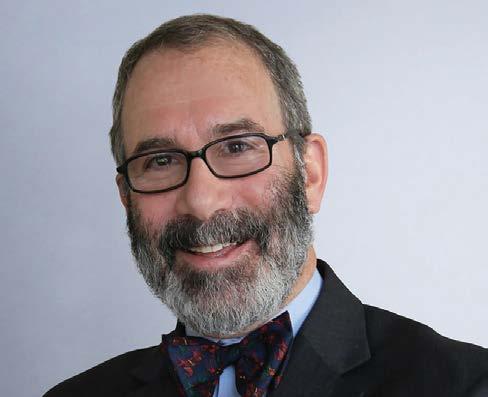
Bashe is a prolific writer and his key to never feeling at a loss for words is dedicating at least 90 minutes a day to reading. “By reading other people’s works and books that combine the interests of my industry, I assimilate ideas, information, aspirations and insights,” Bashe said.
“I percolate on my pieces and most times I’ve written the article in my head before I even sit down at my computer,” Bashe said.
He’s long believed that agencies are home to creativity addressing clients’ challenges and opportunities. You can find his perspectives with industry colleagues through his articles in BeingWell, Health Tech World, Medika Life and, of course, frequent opinion pieces for O’Dwyer’s
Bashe stressed how important it is to feed off the people you work with. He encourages those getting into PR to attach themselves to someone with skill sets. “Don’t be frightened by title and age. Leaders who stand behind their titles are not leaders,” Bashe said.
“I have an endless curiosity and thirst for knowledge,” Bashe stressed. “This is key to remaining fresh and relevant to colleagues and clients.”
Bashe talked about how he is constantly on the lookout for how to improve his skills. This serves as a good lesson for those thinking of a career in PR or just starting out.
“A degree can take you as far as you want to go, but you have to maintain and reinvest in knowledge,” Bashe said.
AI and the power of words
Bashe believes that at its core, public relations is the foundation of the free world. “There are no PR agencies in Iran, Russia and North Korea. PR can’t exist in those nations,” Bashe said.
Whether it’s helping a buyer choose the right car, giving patients a better understanding of treatment options or educating the public on the purpose of recycling, PR represents the ability to inspire and influence behavior, according to Bashe.
“It’s all about words sewn together to create informed decisions,” Bashe said.
Bashe feels that the explosion of artificial intelligence is just the natural progression from big data to machine learning to finding ways to apply that massive data for use.
However, AI is really a misnomer for Bashe and instead should stand for augmented implementation. “The information AI gathers is definitely real and organic,” Bashe insists.
But Bashe warns that because AI blends the accurate and inaccurate, you really must hone your cognitive ability to use it effectively. “The ability to format very specific prompts is key to using AI,” Bashe said.
The basic tenet of PR to help people make informed decisions based on accurate information is still the same, however now it must be tailored to different platforms and made available for individuals to search it out on their own, Bashe explained.
When it comes to his practice work with FINN Partners, Bashe said he is driven by an obligation to address the needs of justice. “If you see injustice, and you don’t speak out, you bond yourself to that injustice,” Bashe said.
The U.S. health system is too fragmented and many fall between the cracks, according to Bashe.
Bashe acknowledges the limitations placed on communications and feels those problems should be highlighted.
“I see my work as precious and by championing client endeavors, I’m contributing to the betterment of the world,” Bashe said.
Bashe feels PR needs people who are curious and want to explore information to sustain people and planet.
“We’re afraid to become risk-takers. Fear is merely an emotion and shouldn’t stop us from doing something that matters,” Bashe said.

